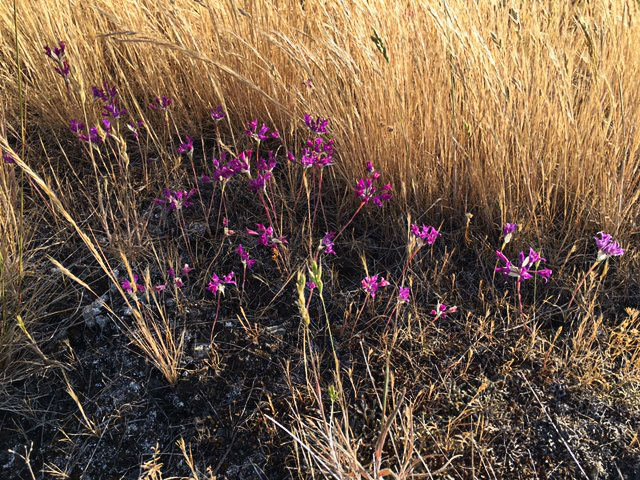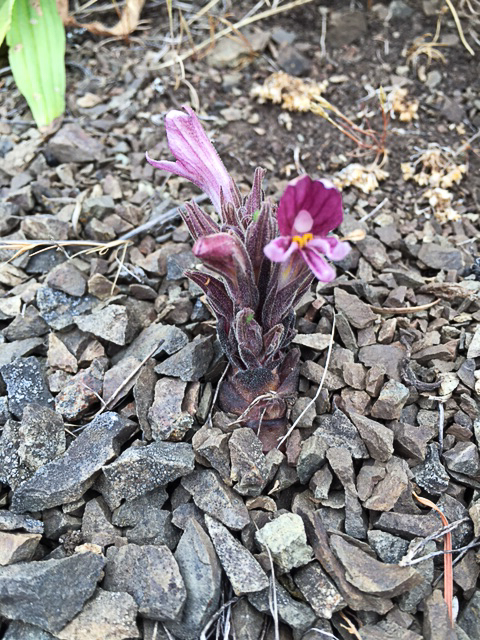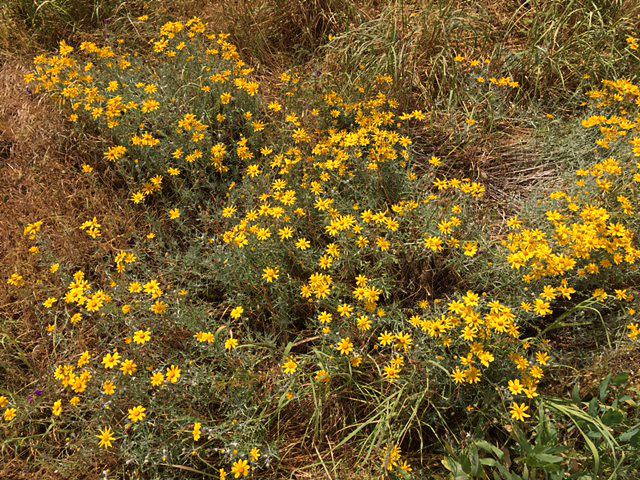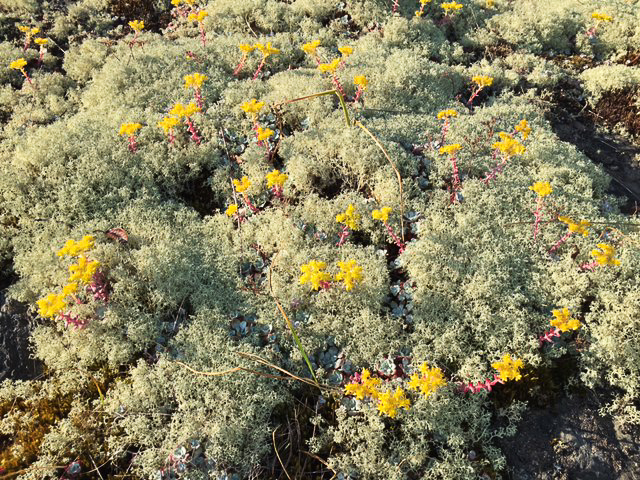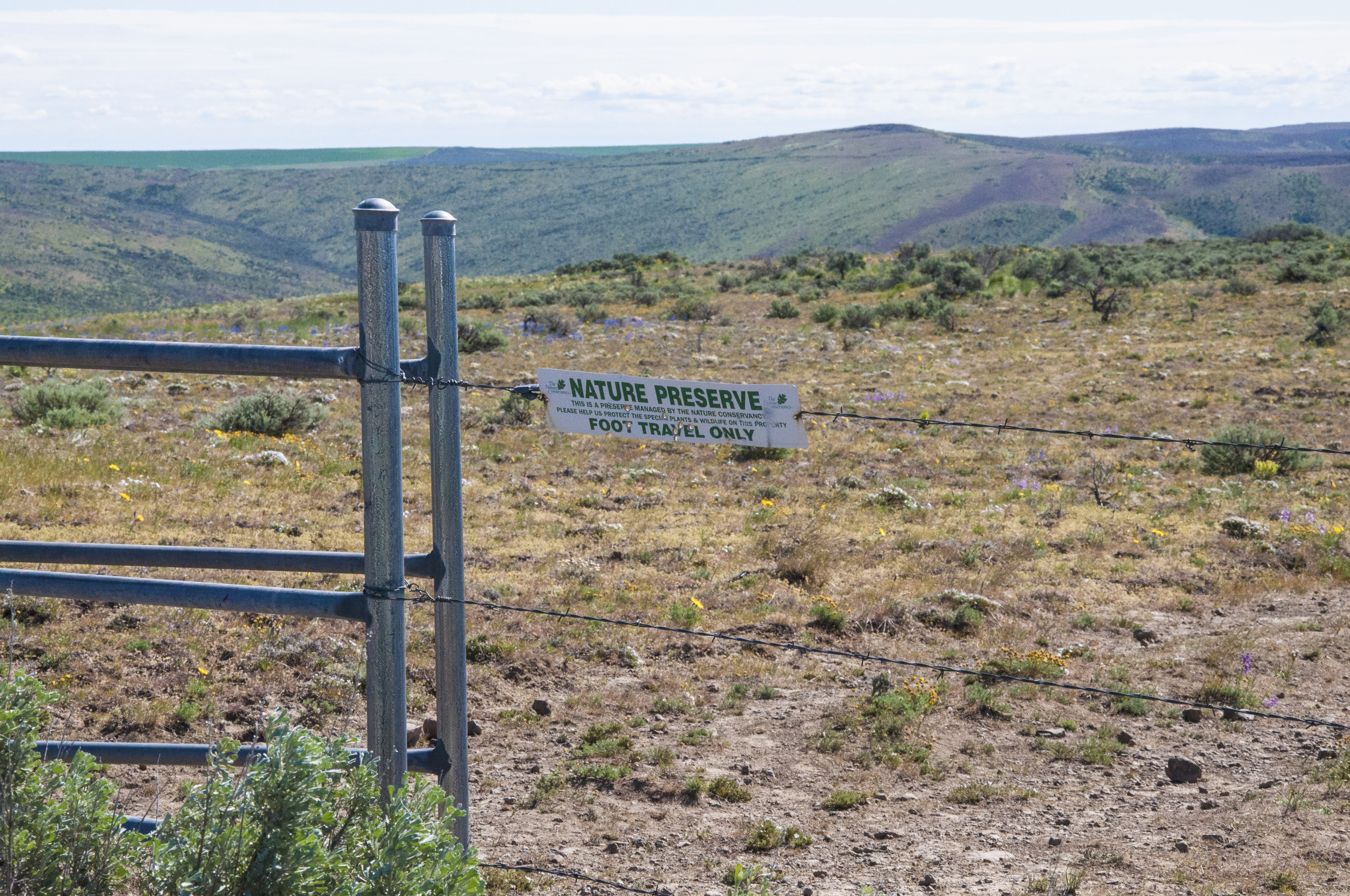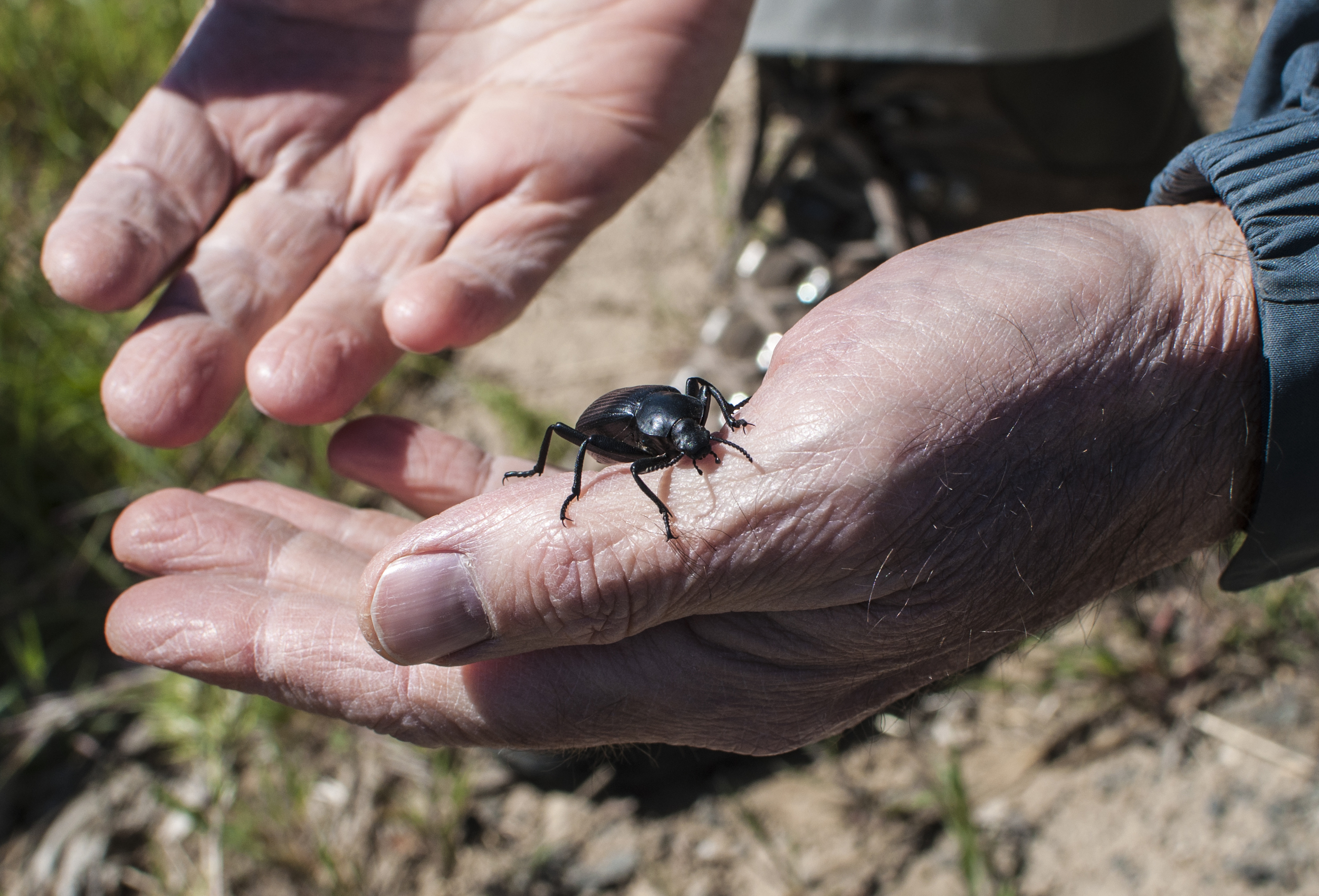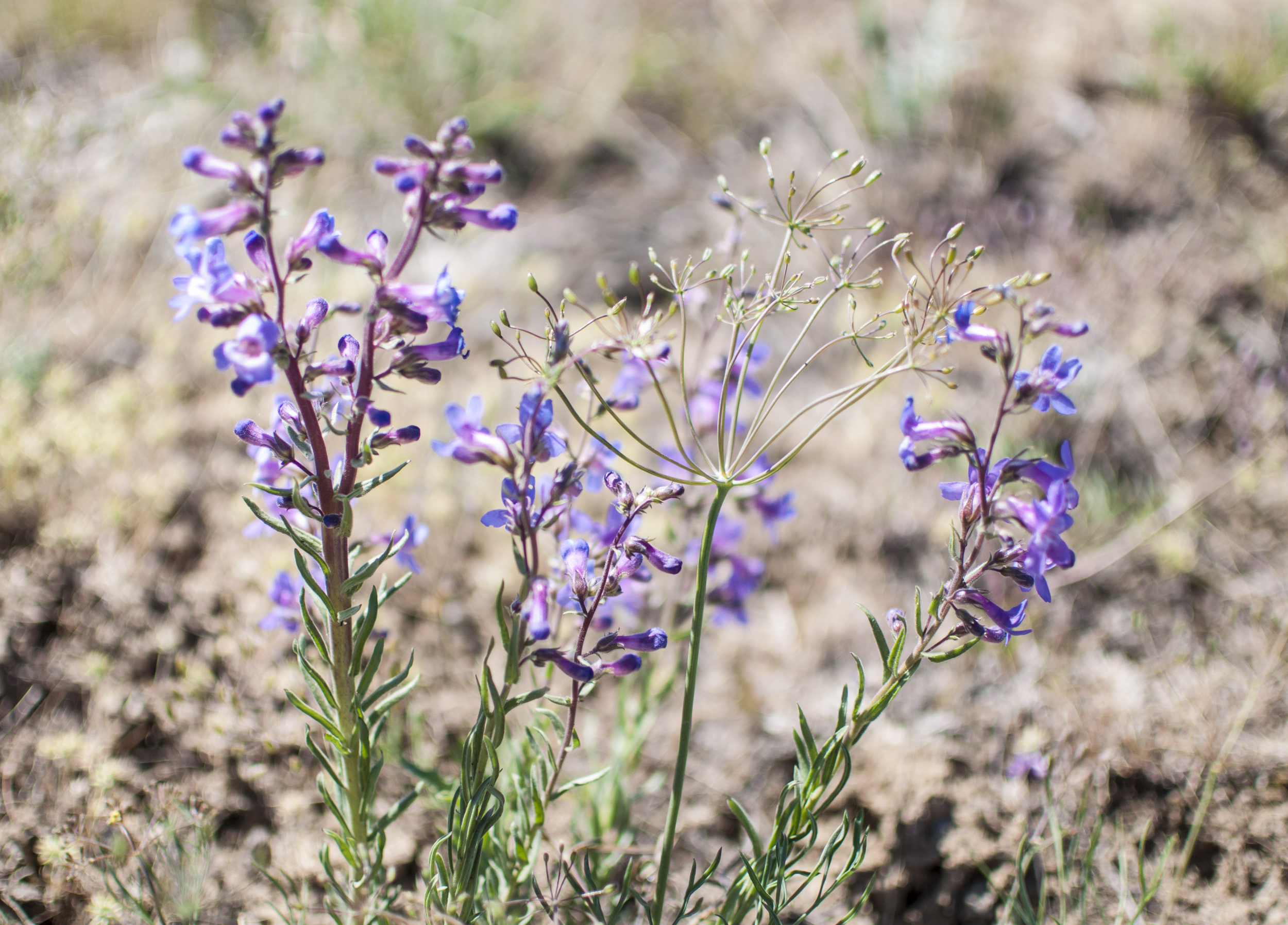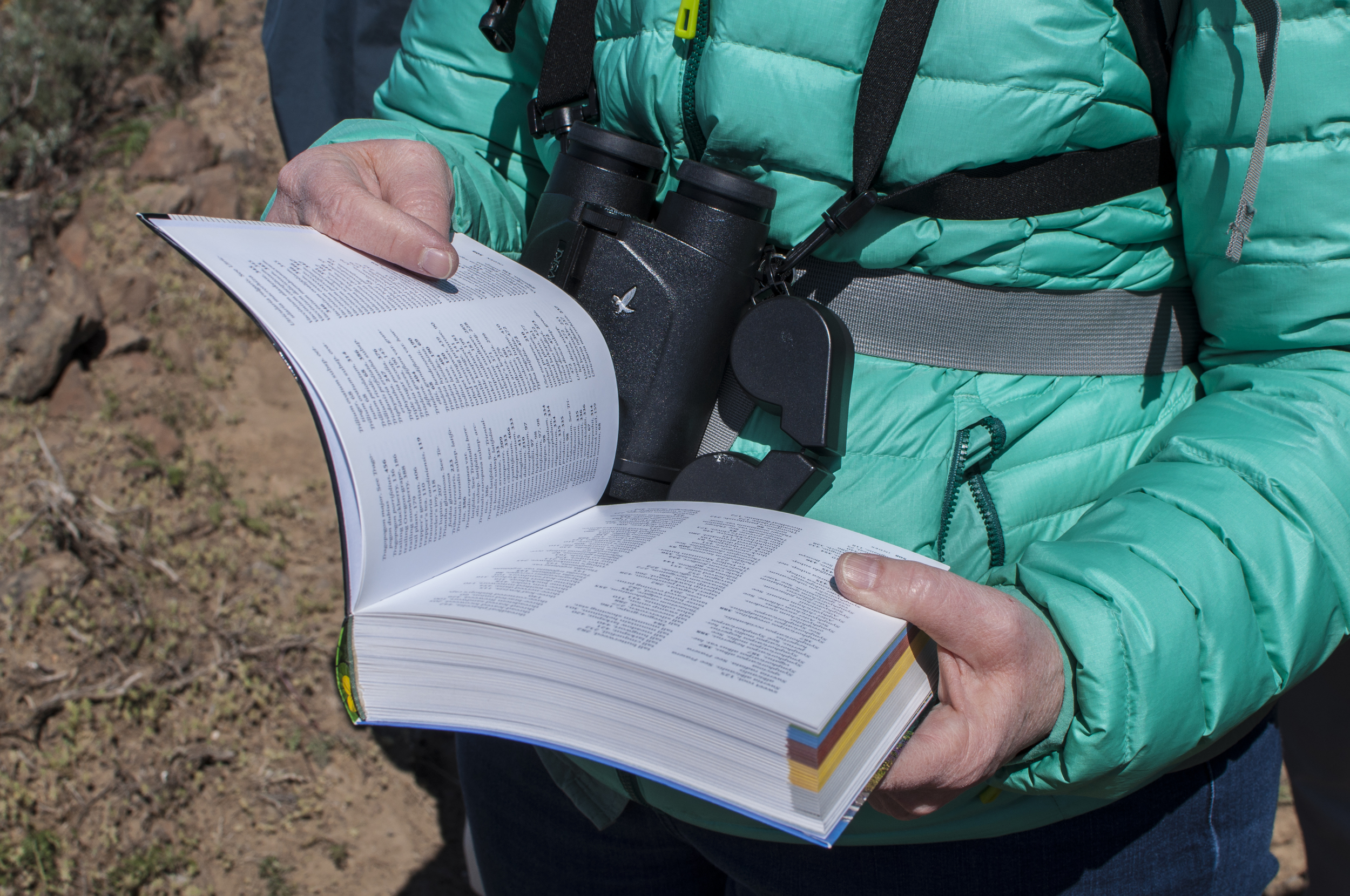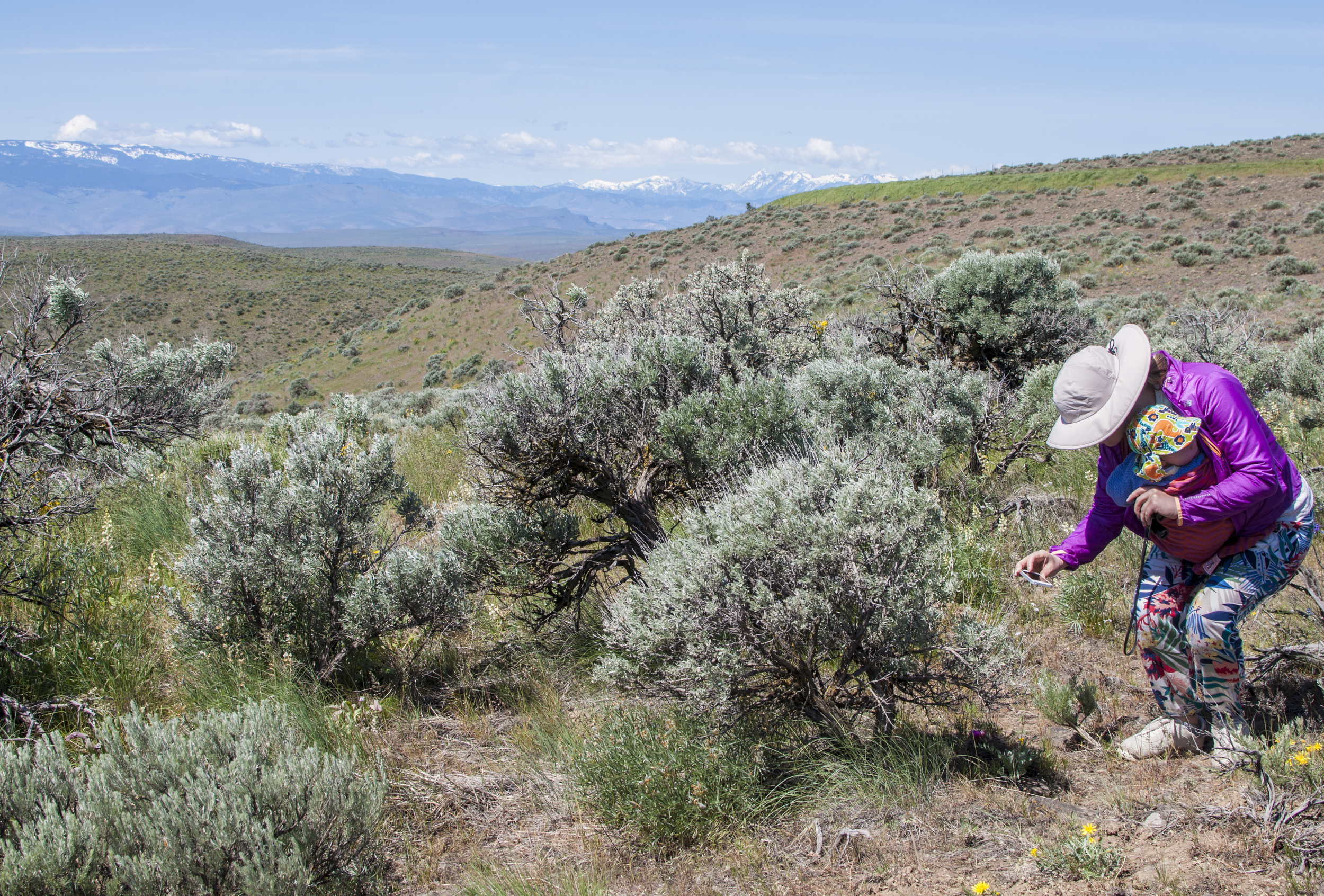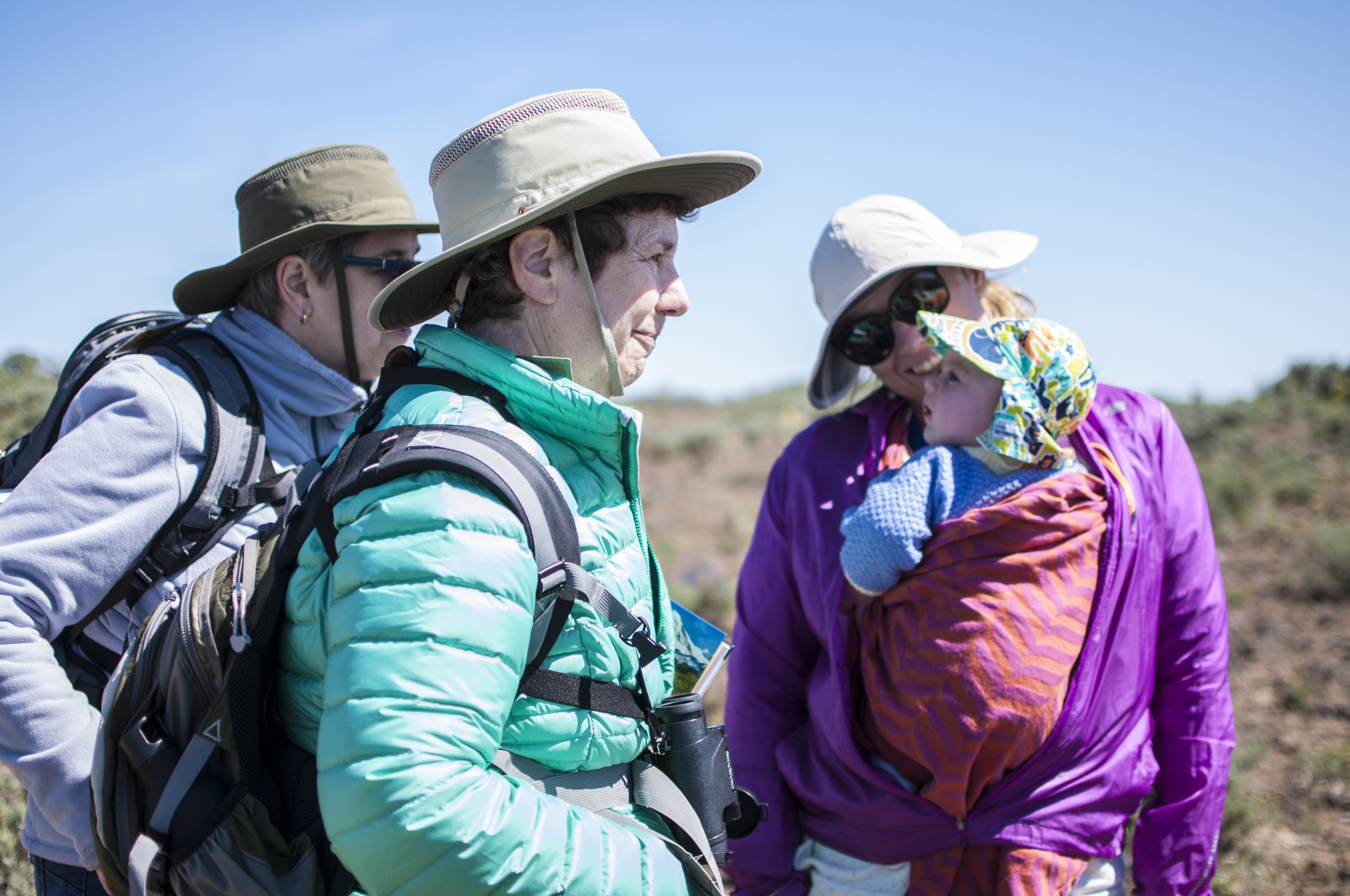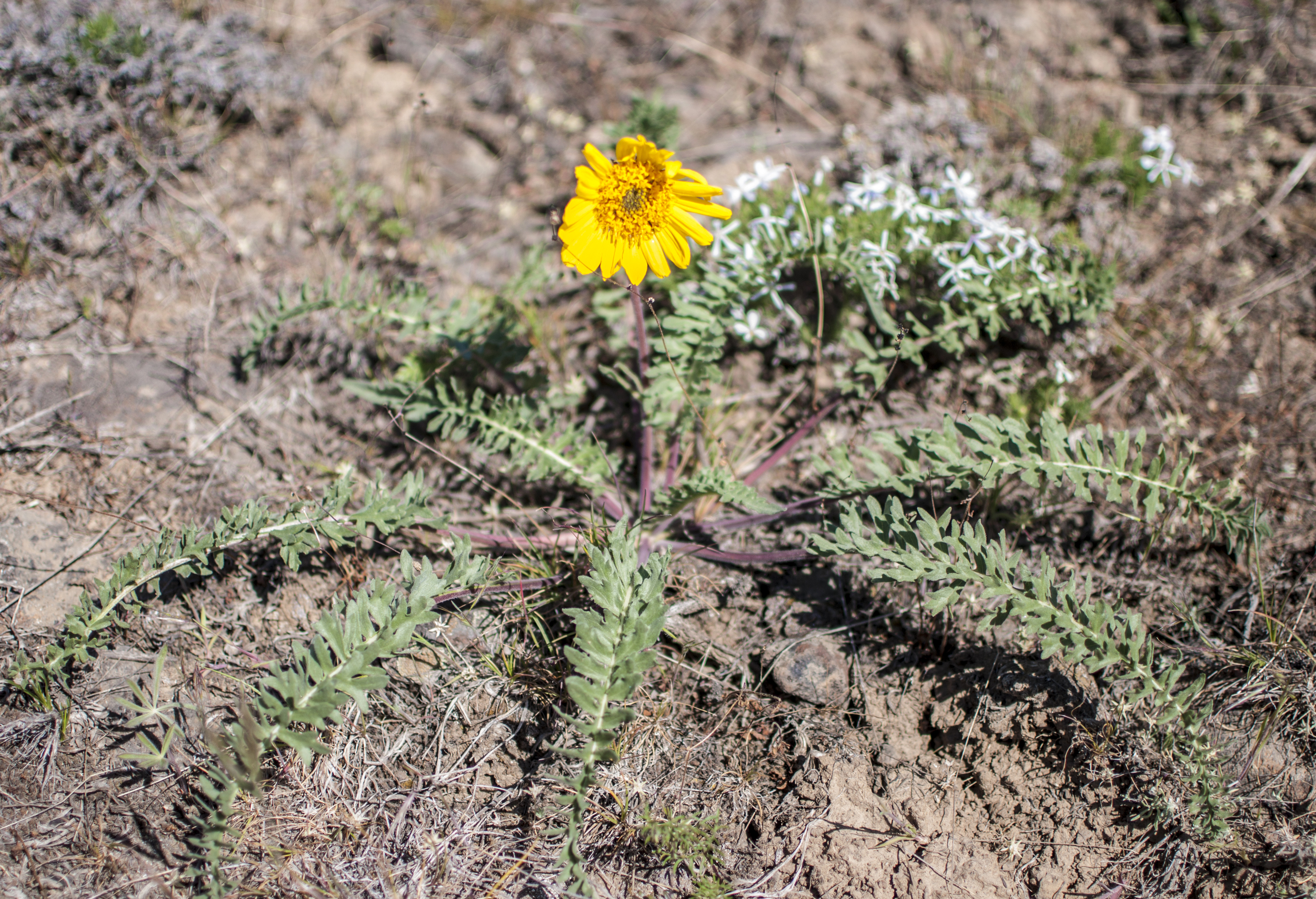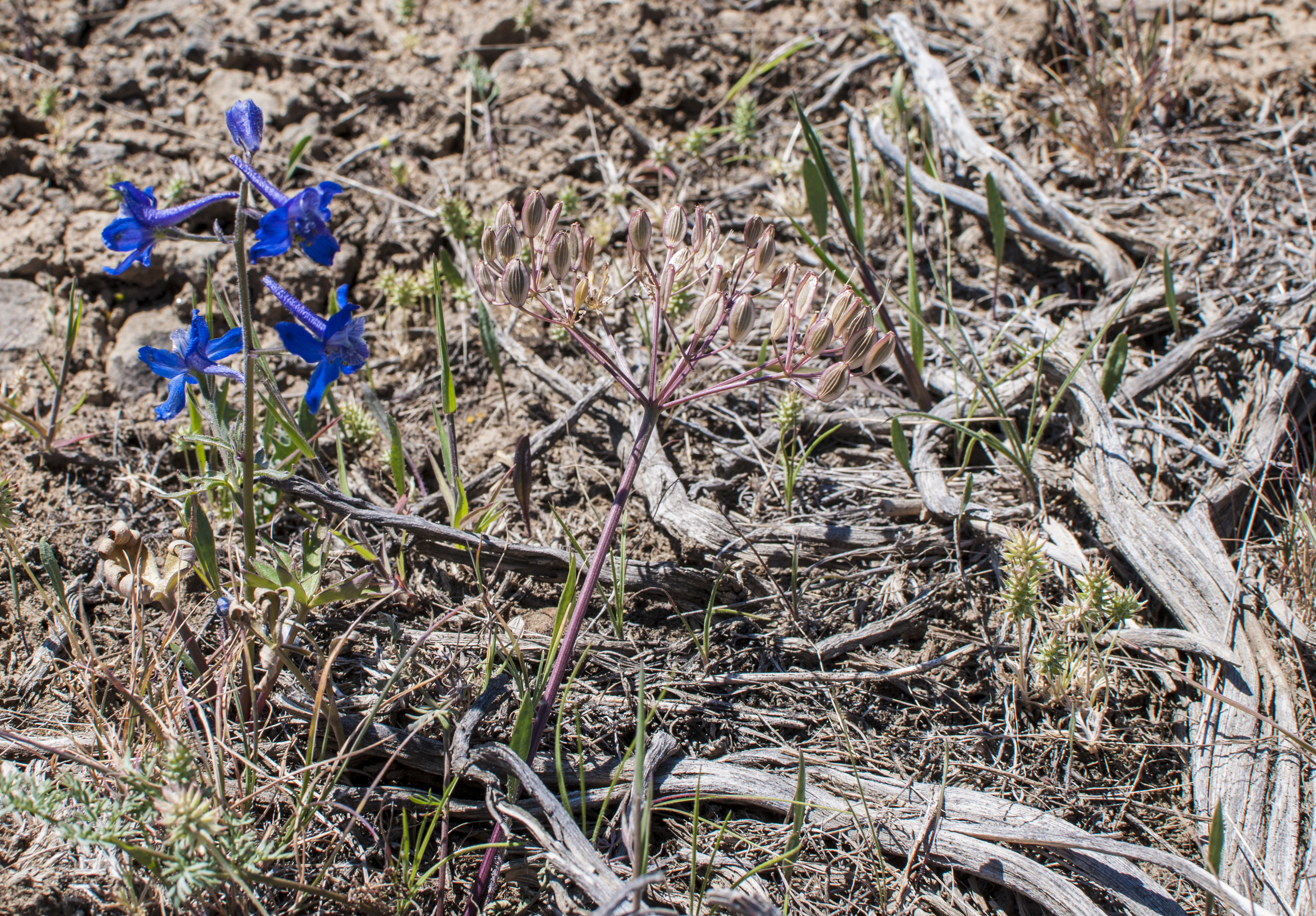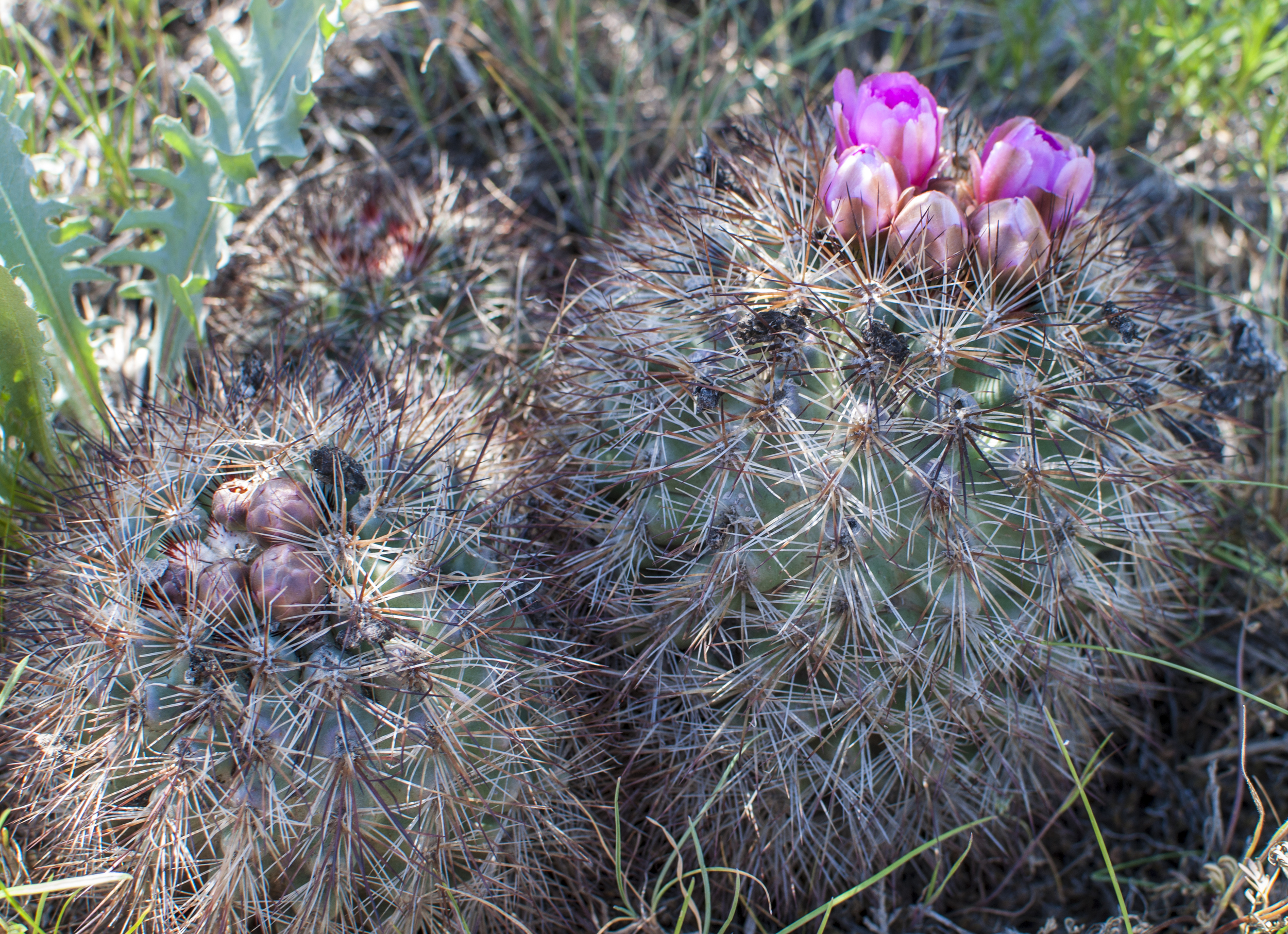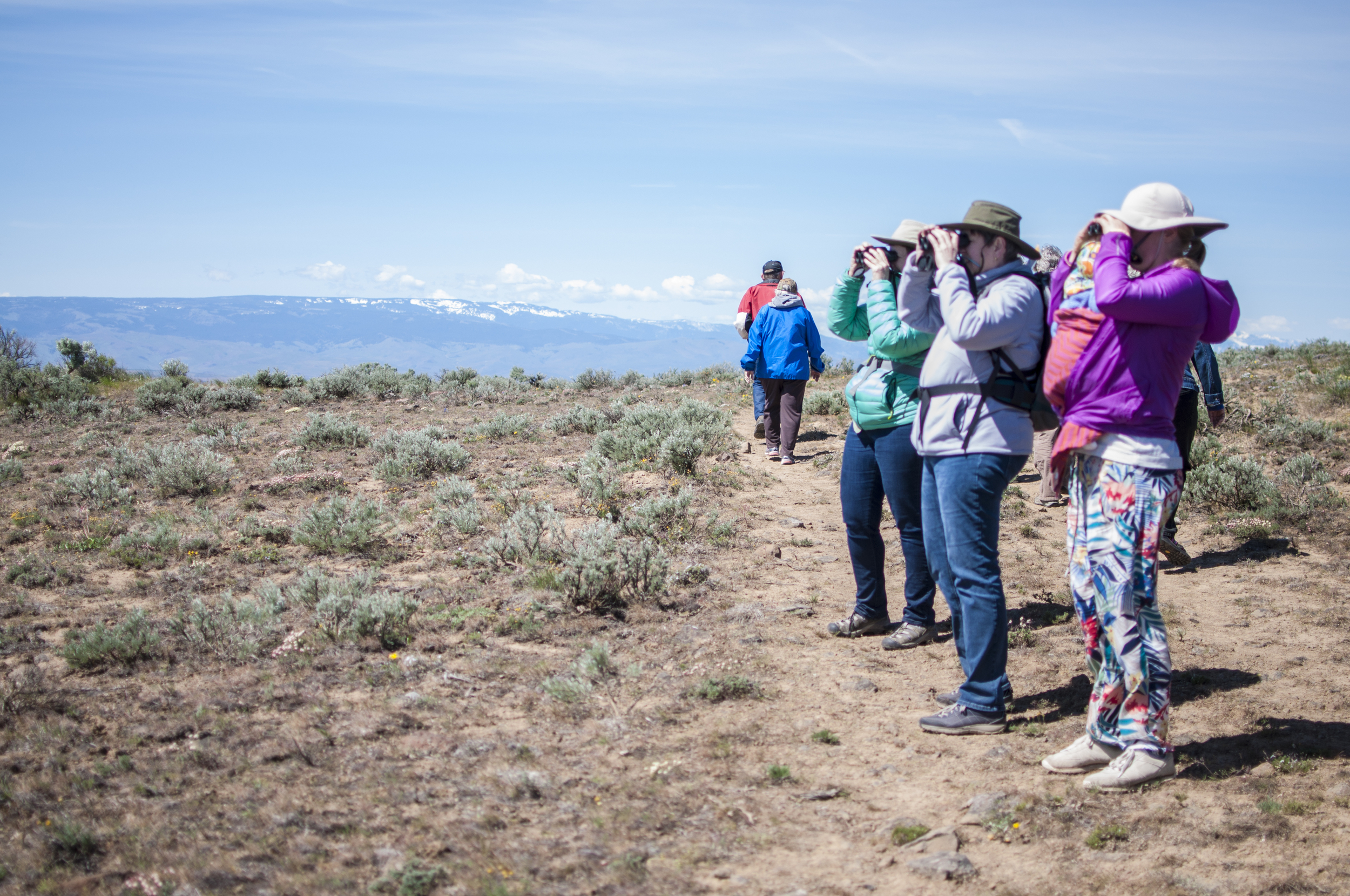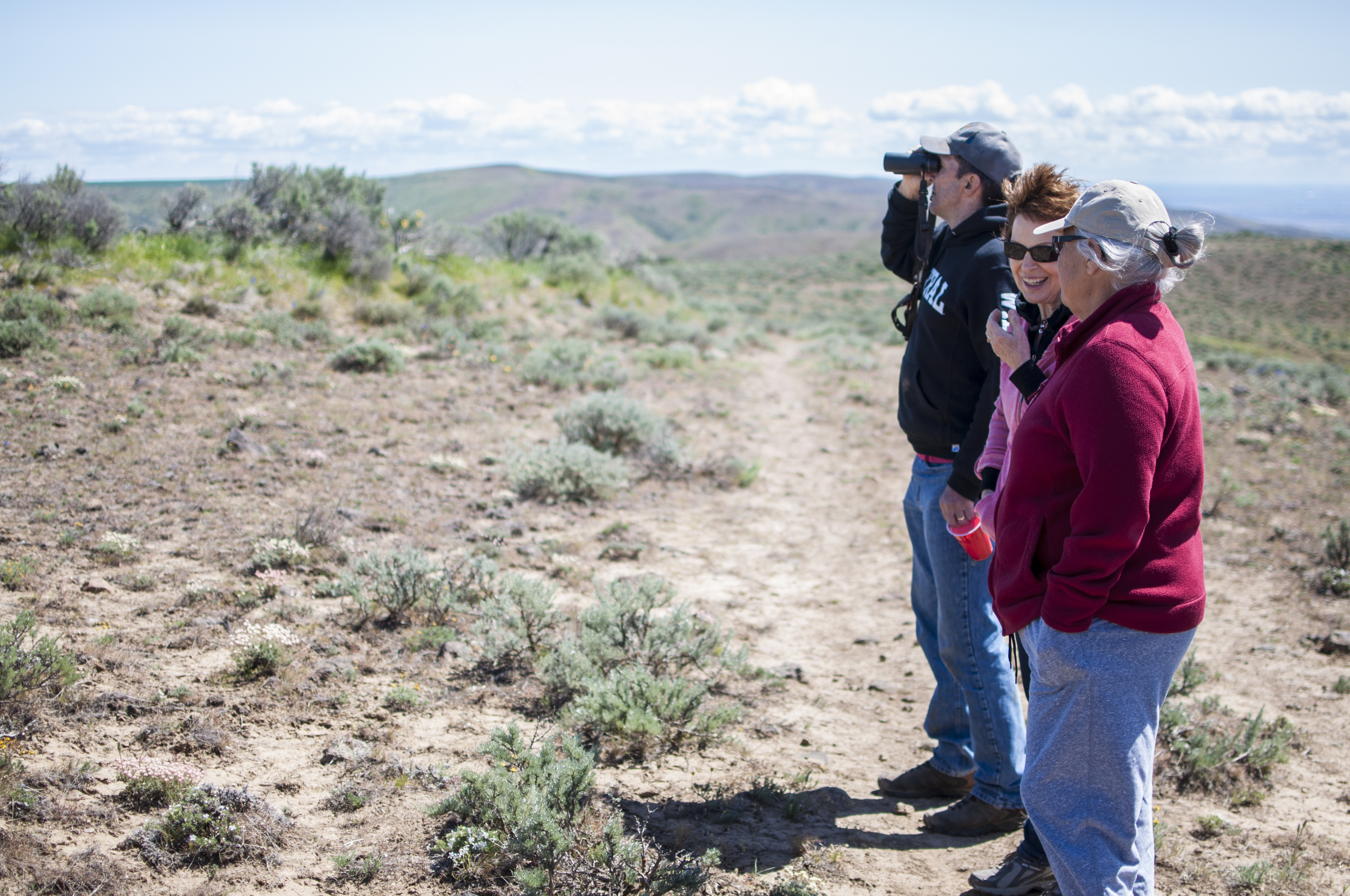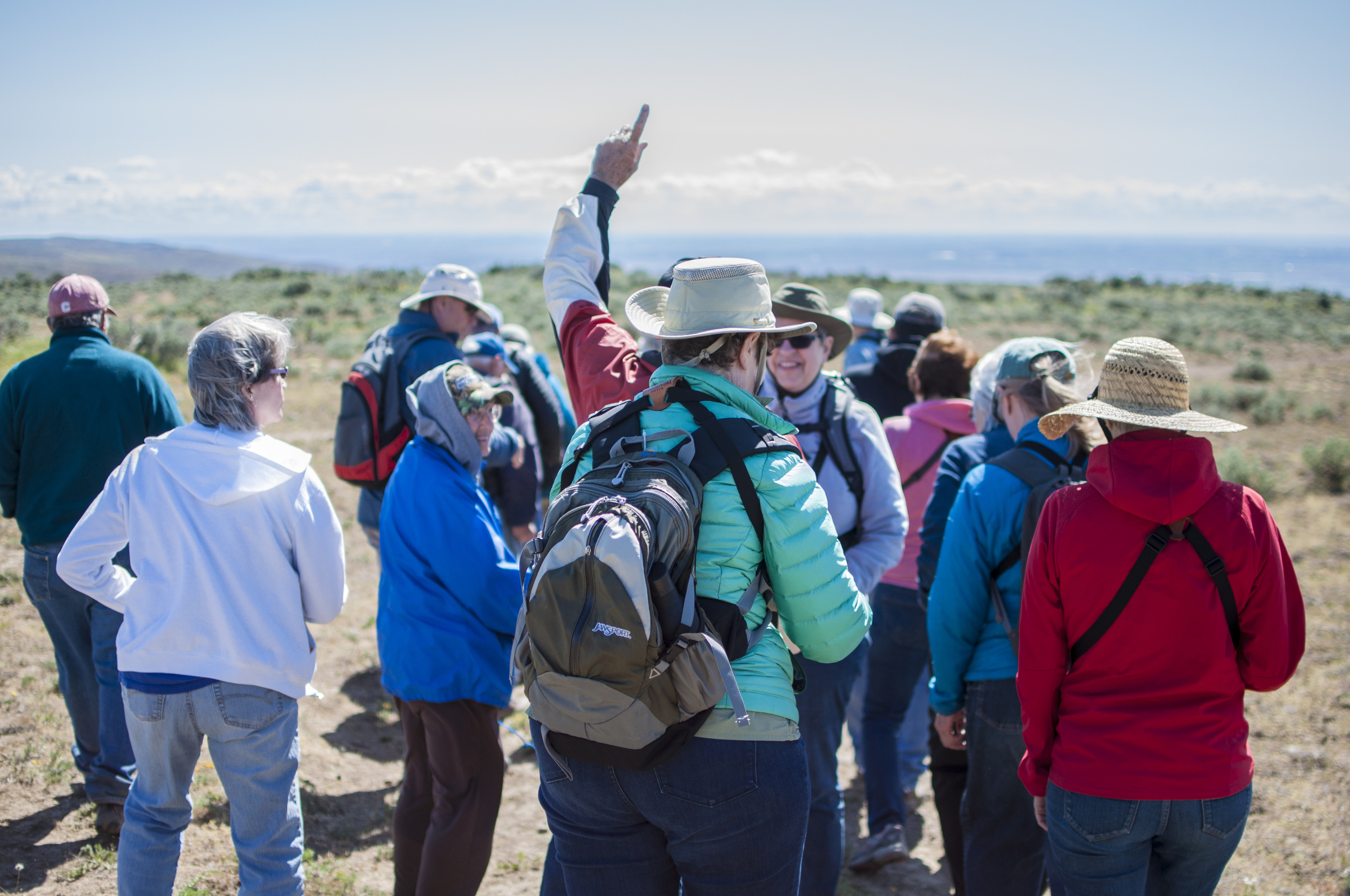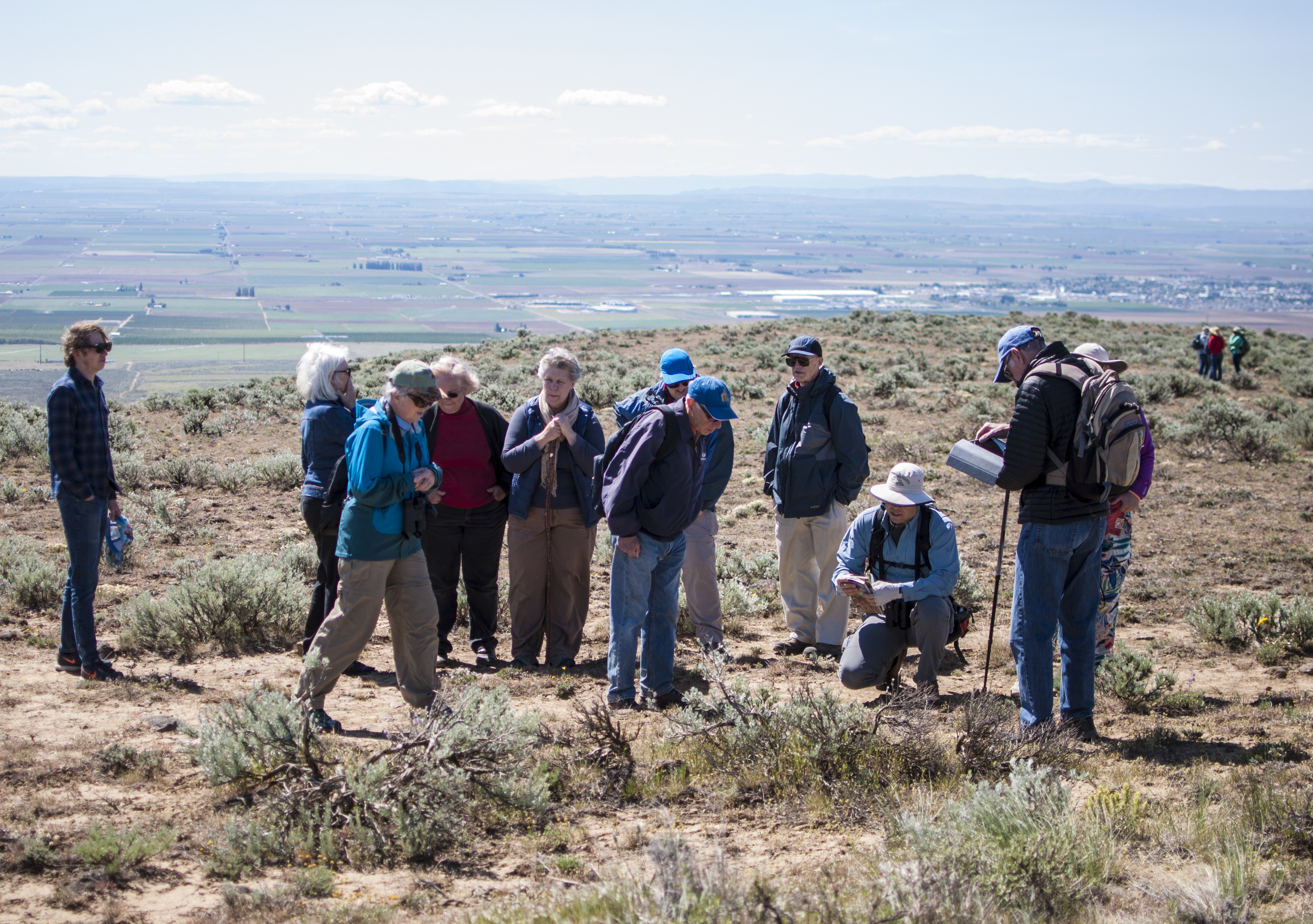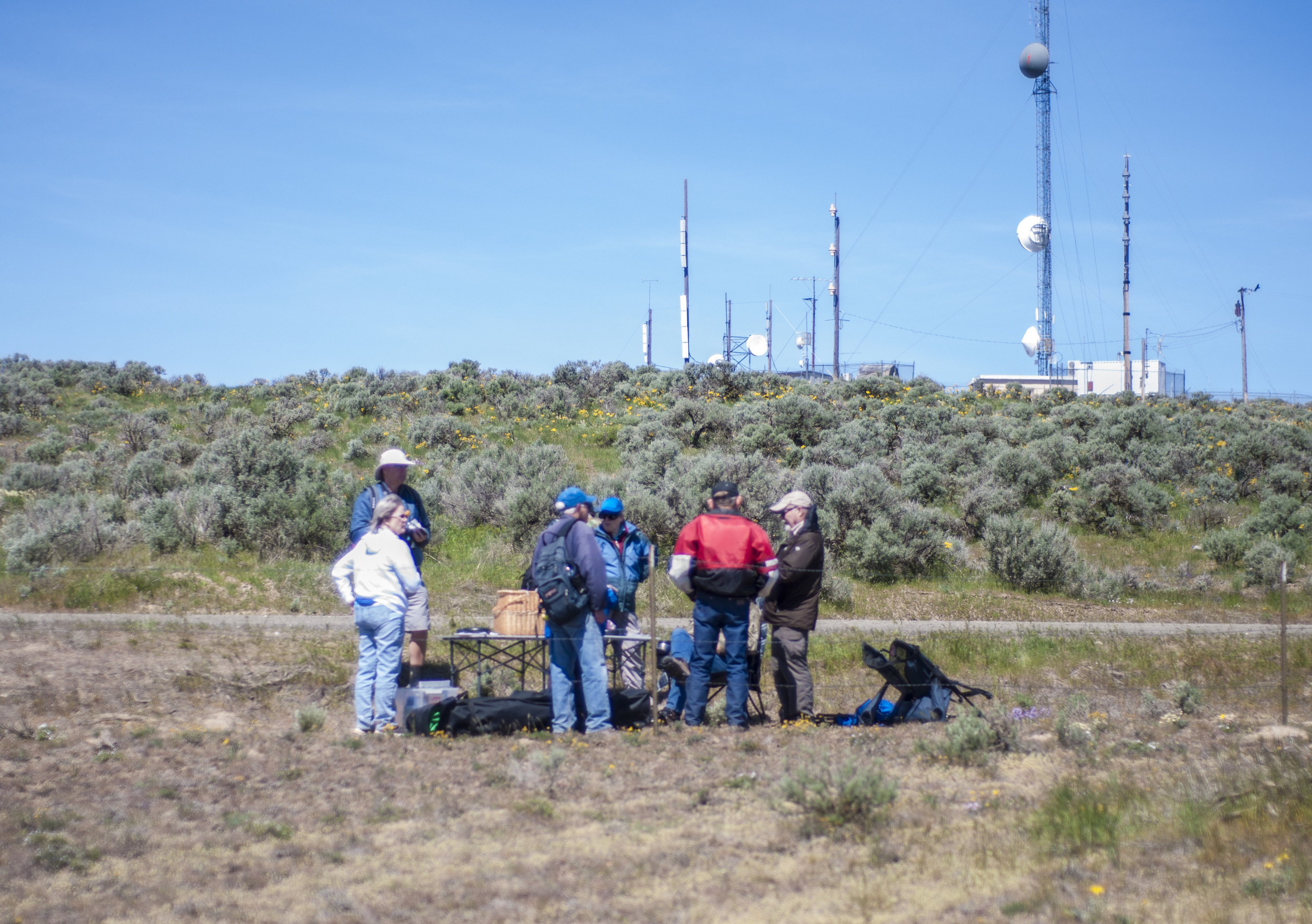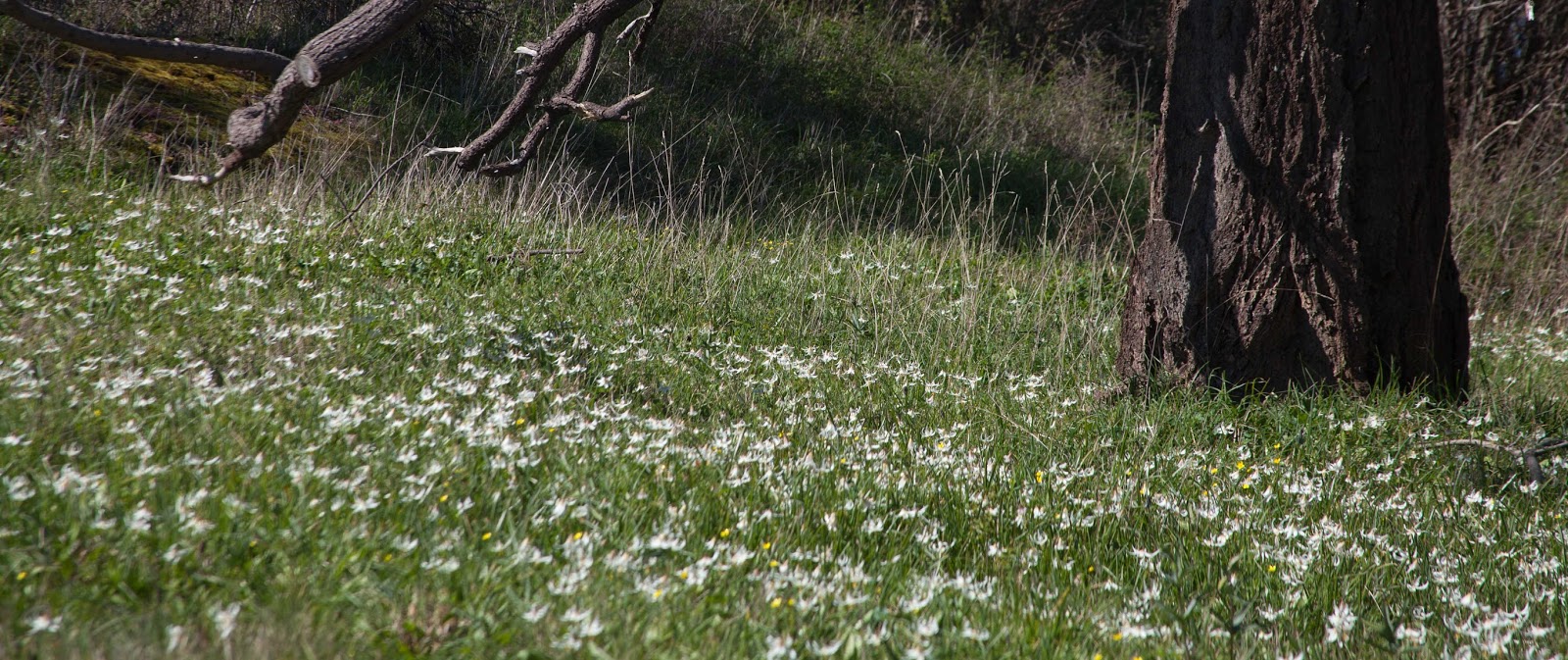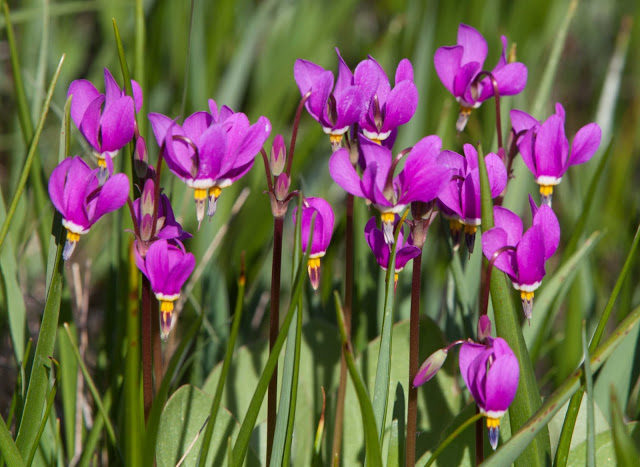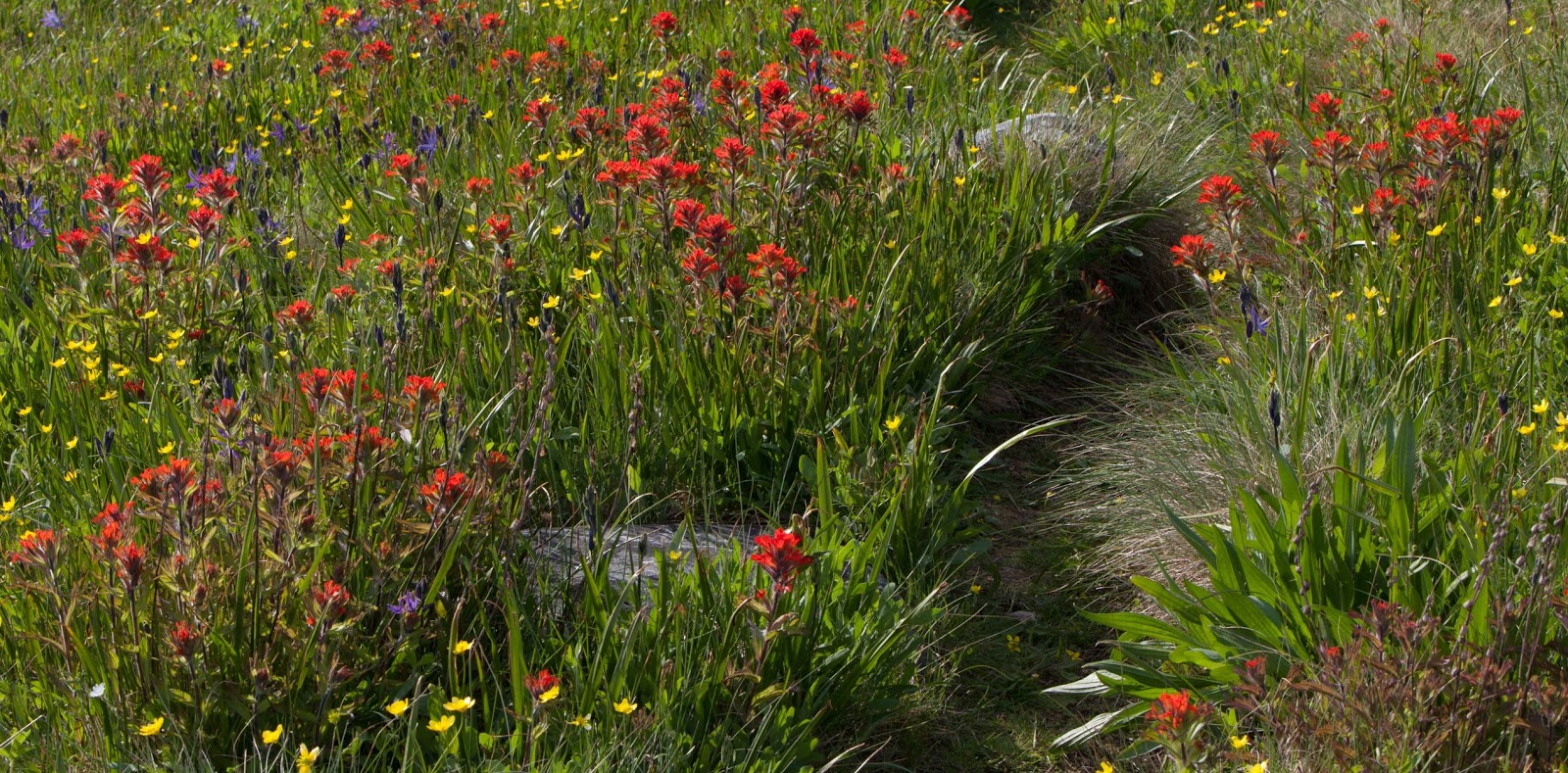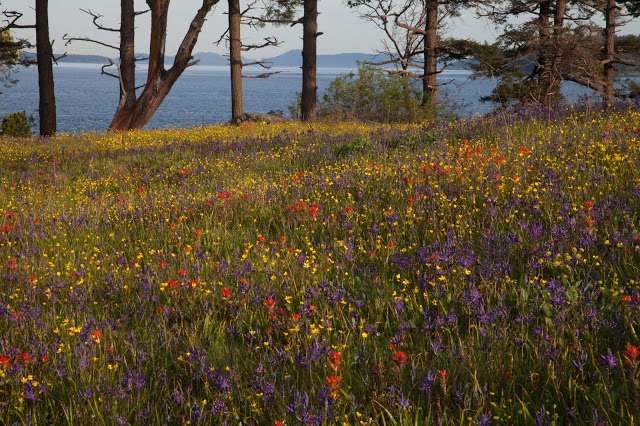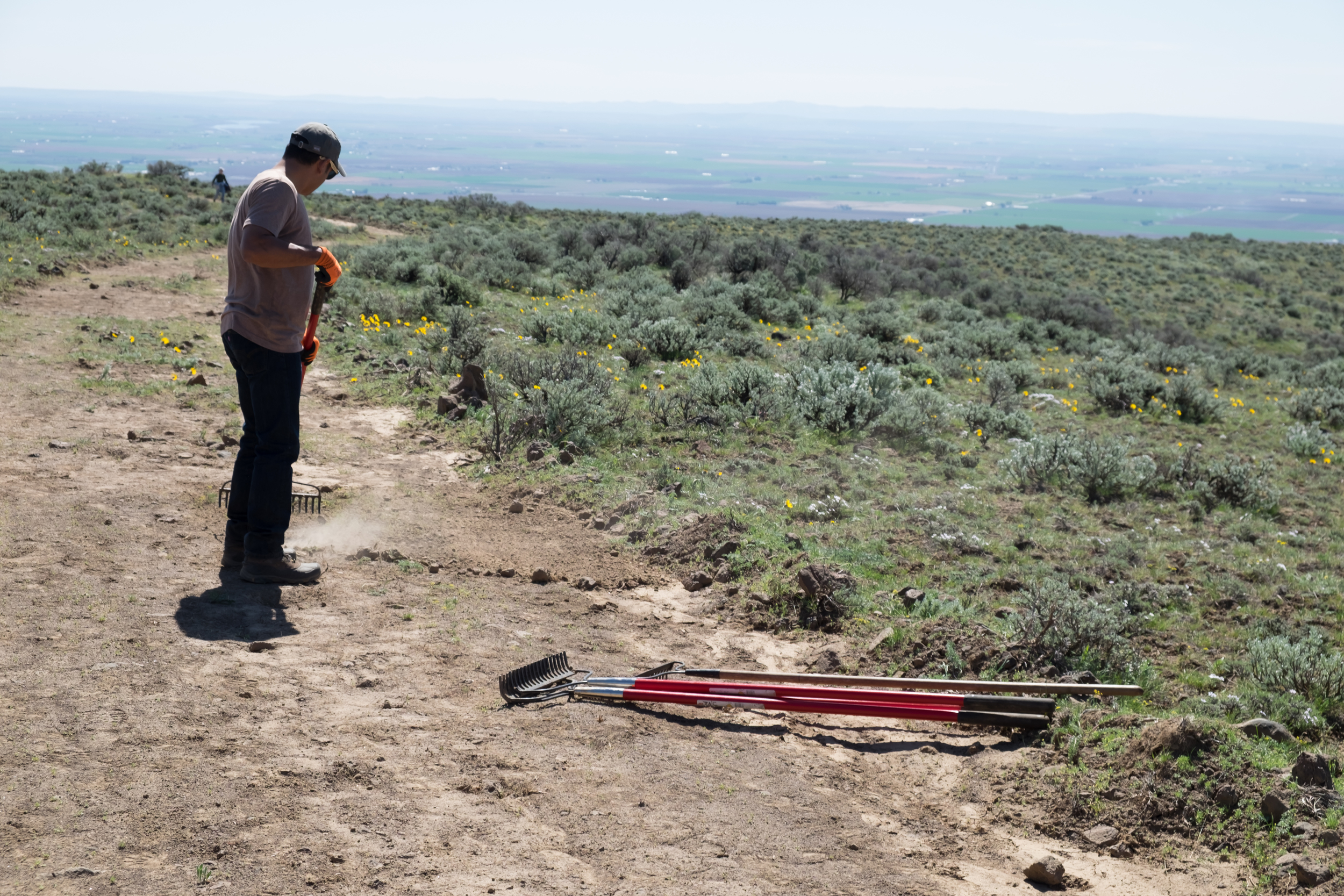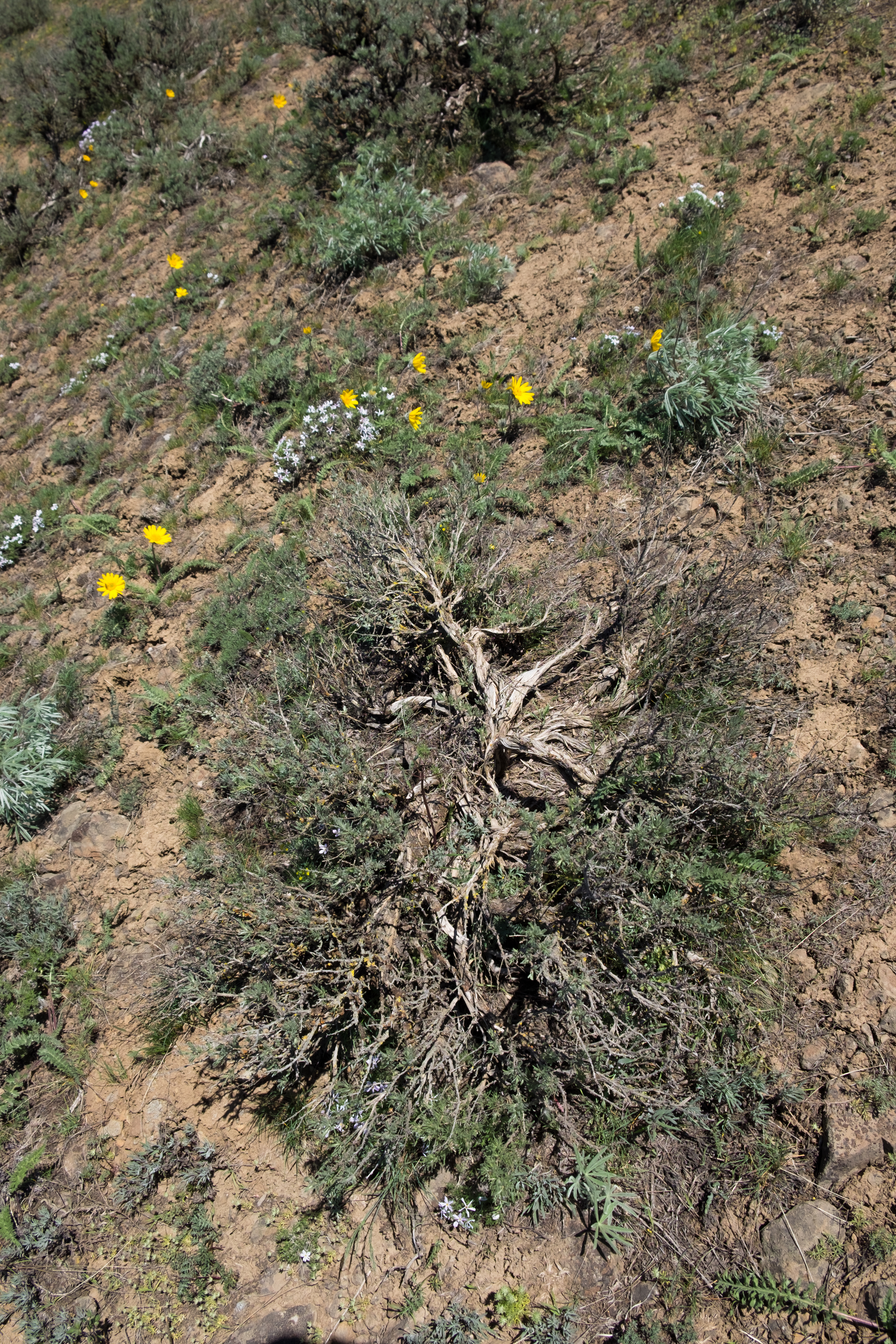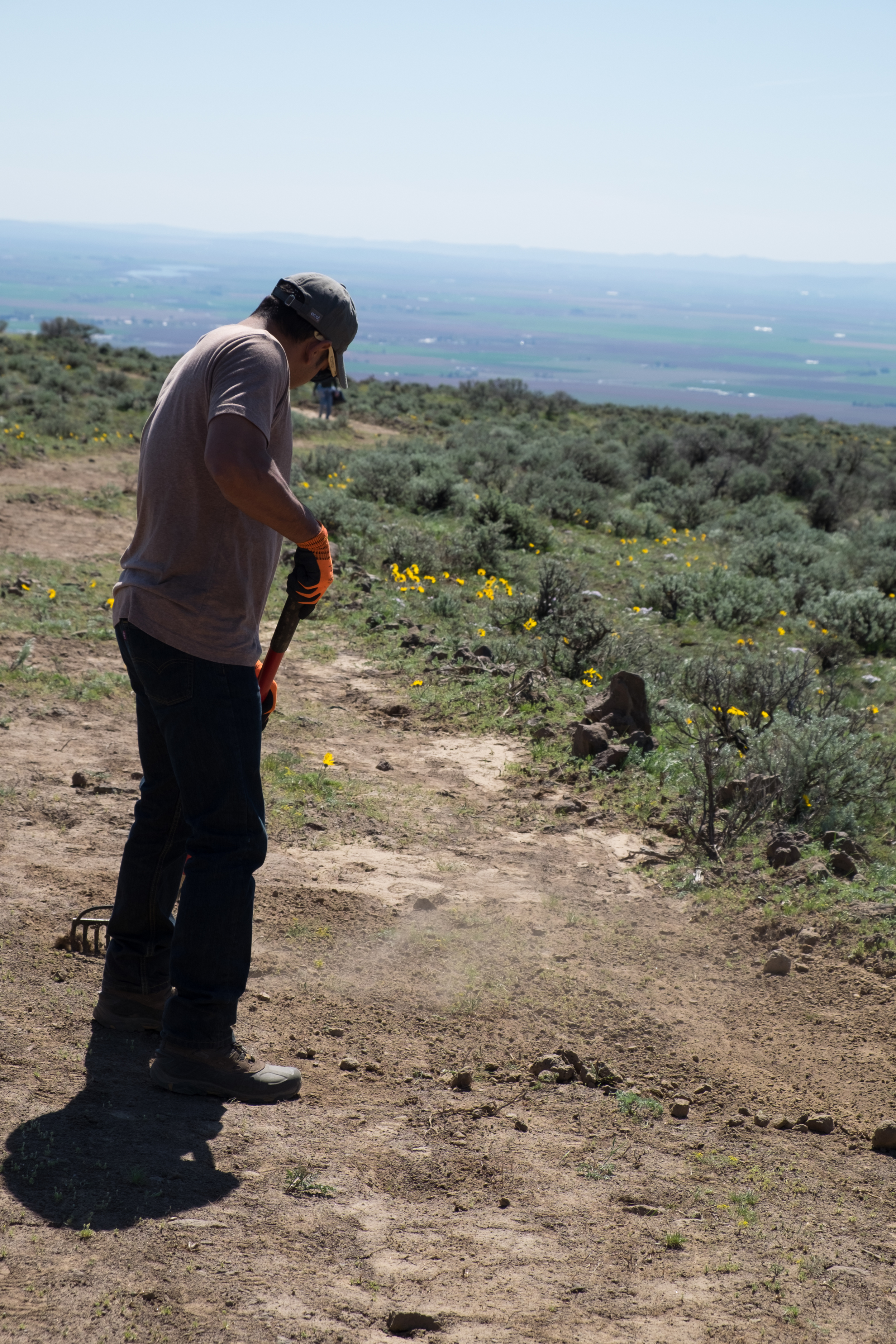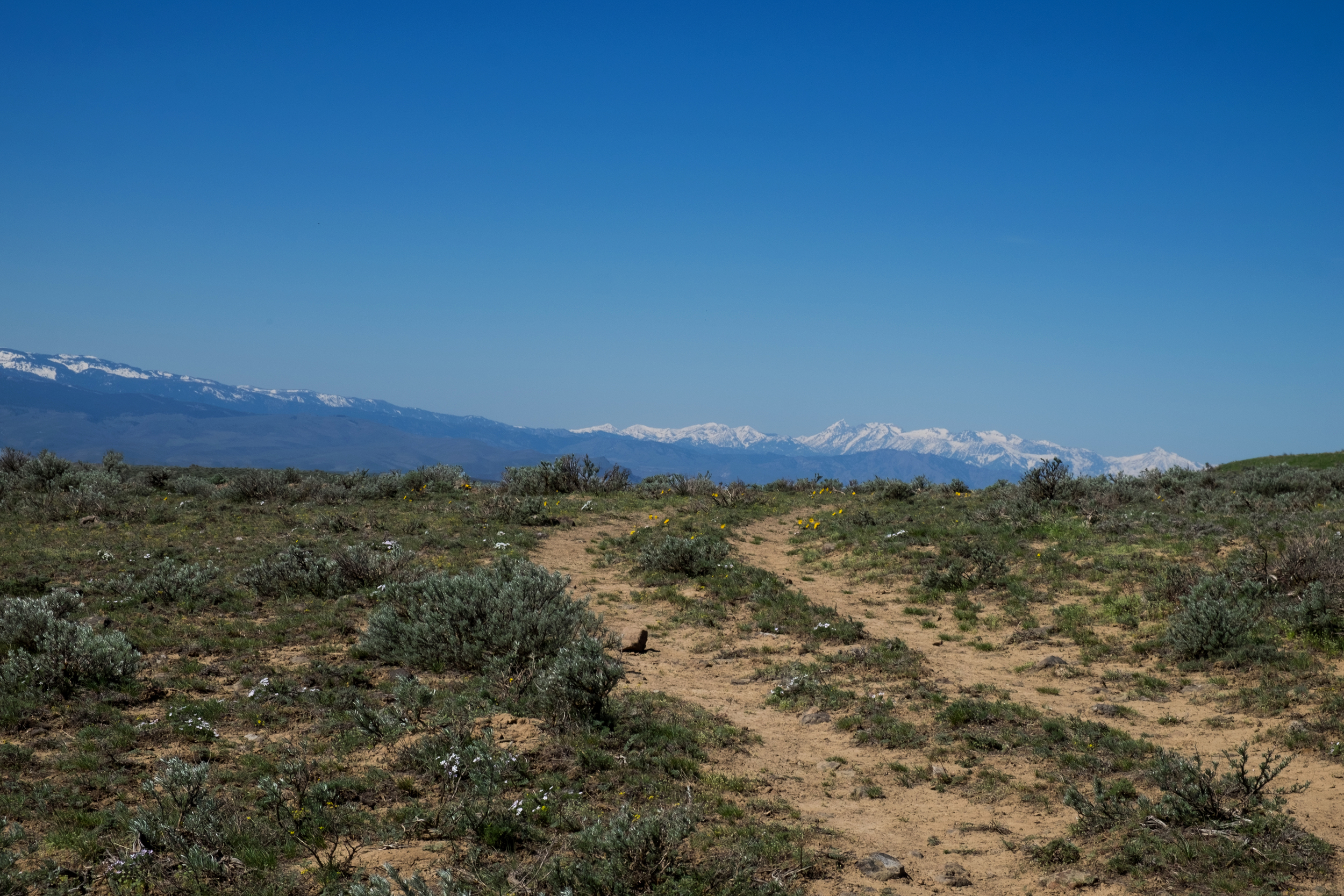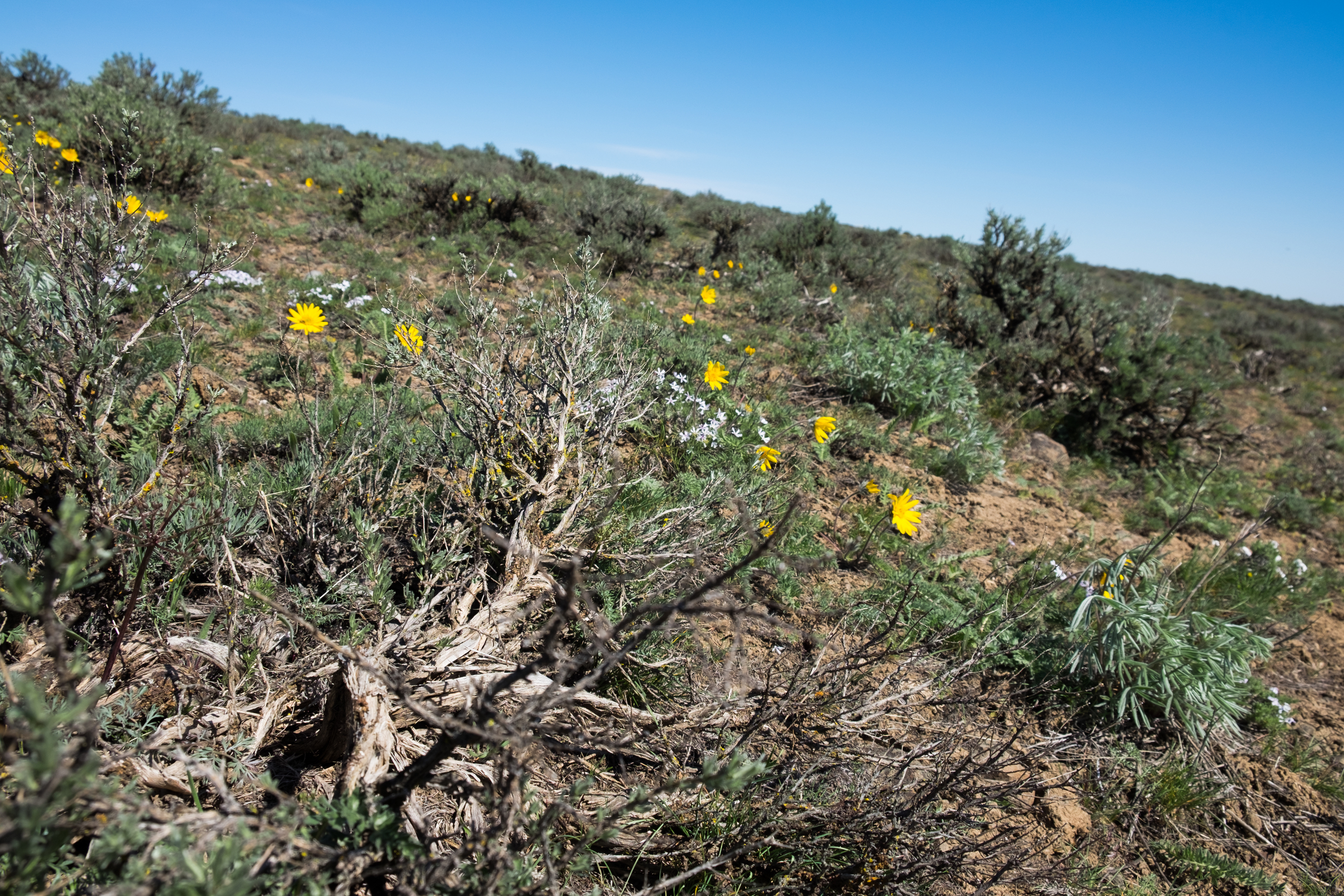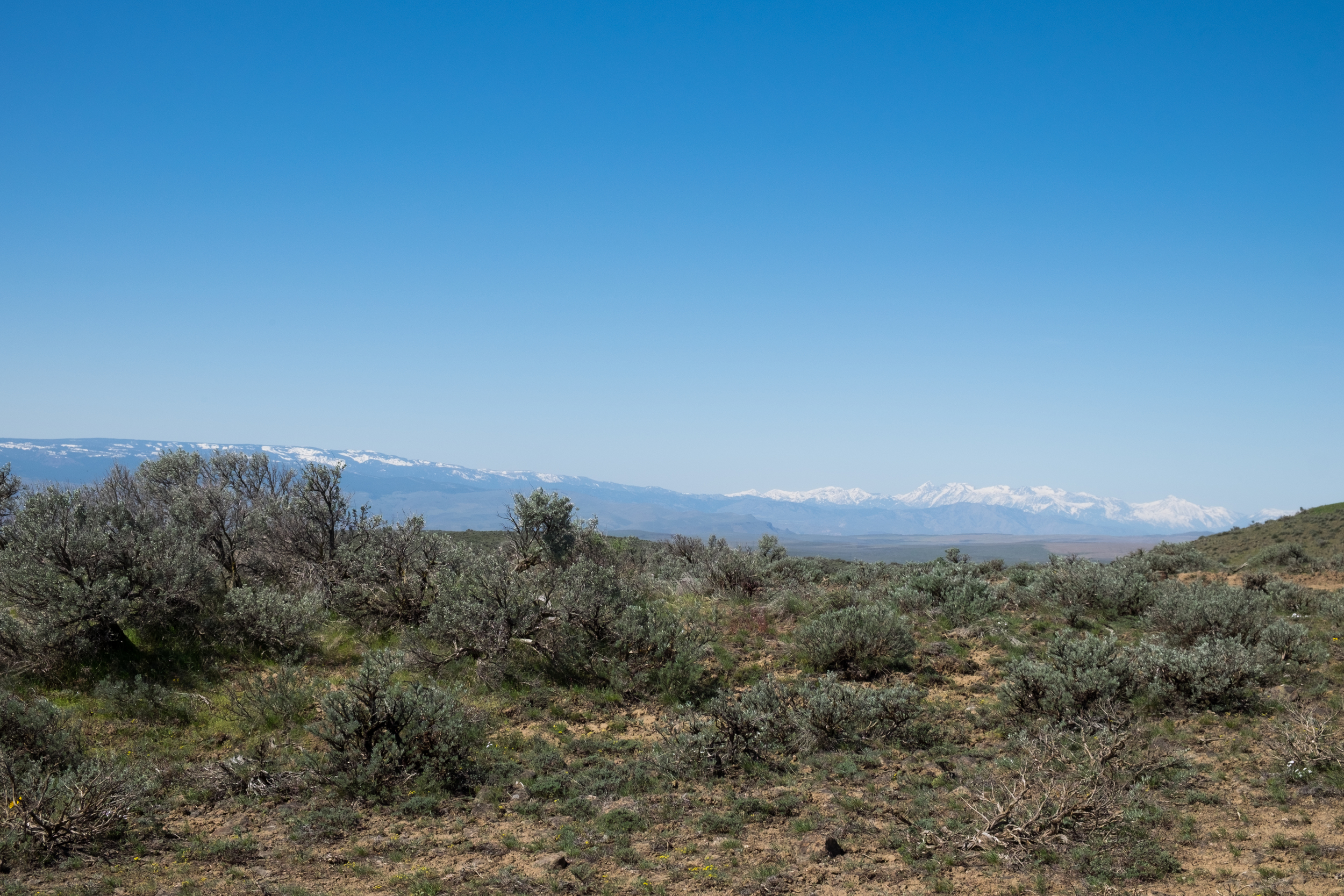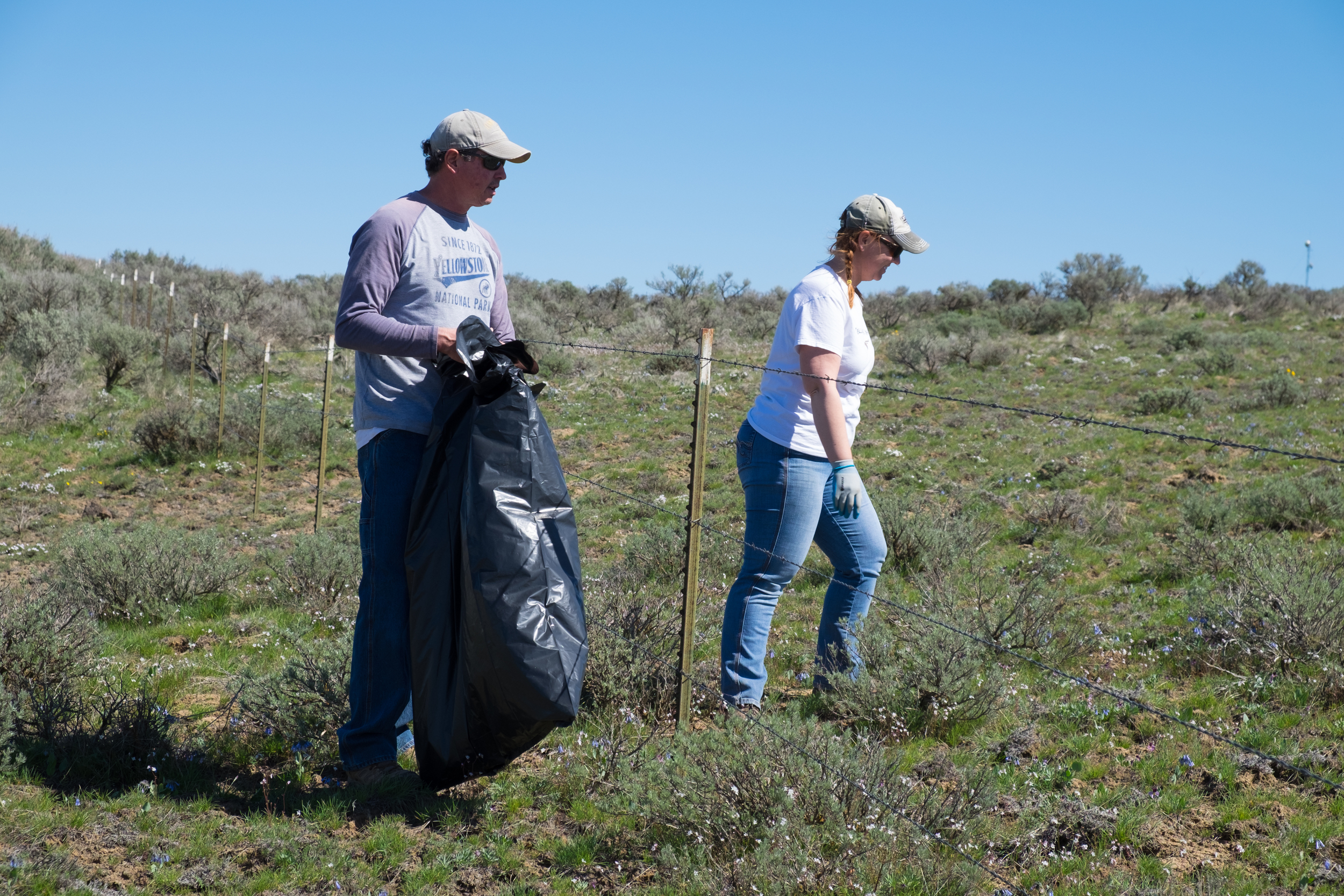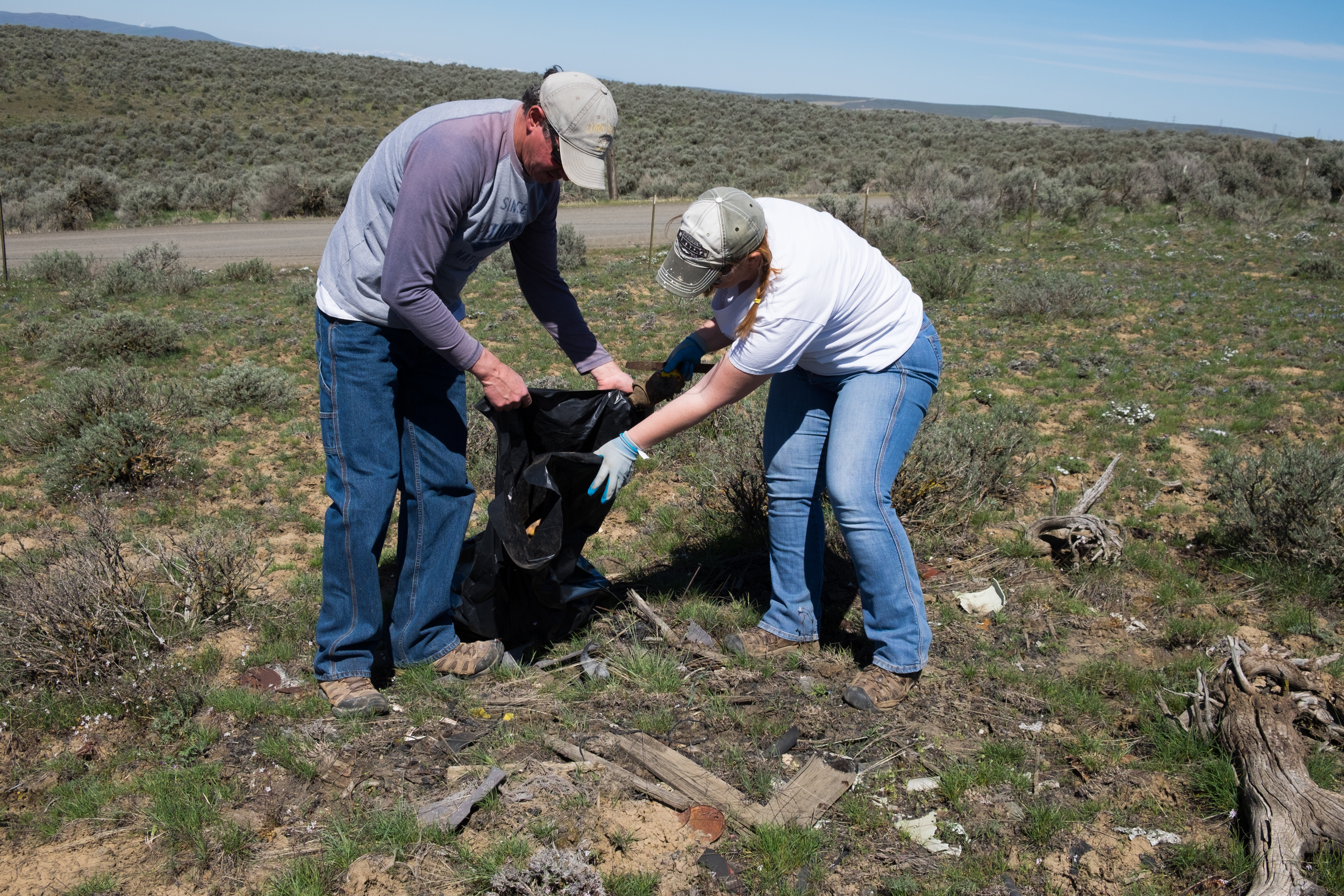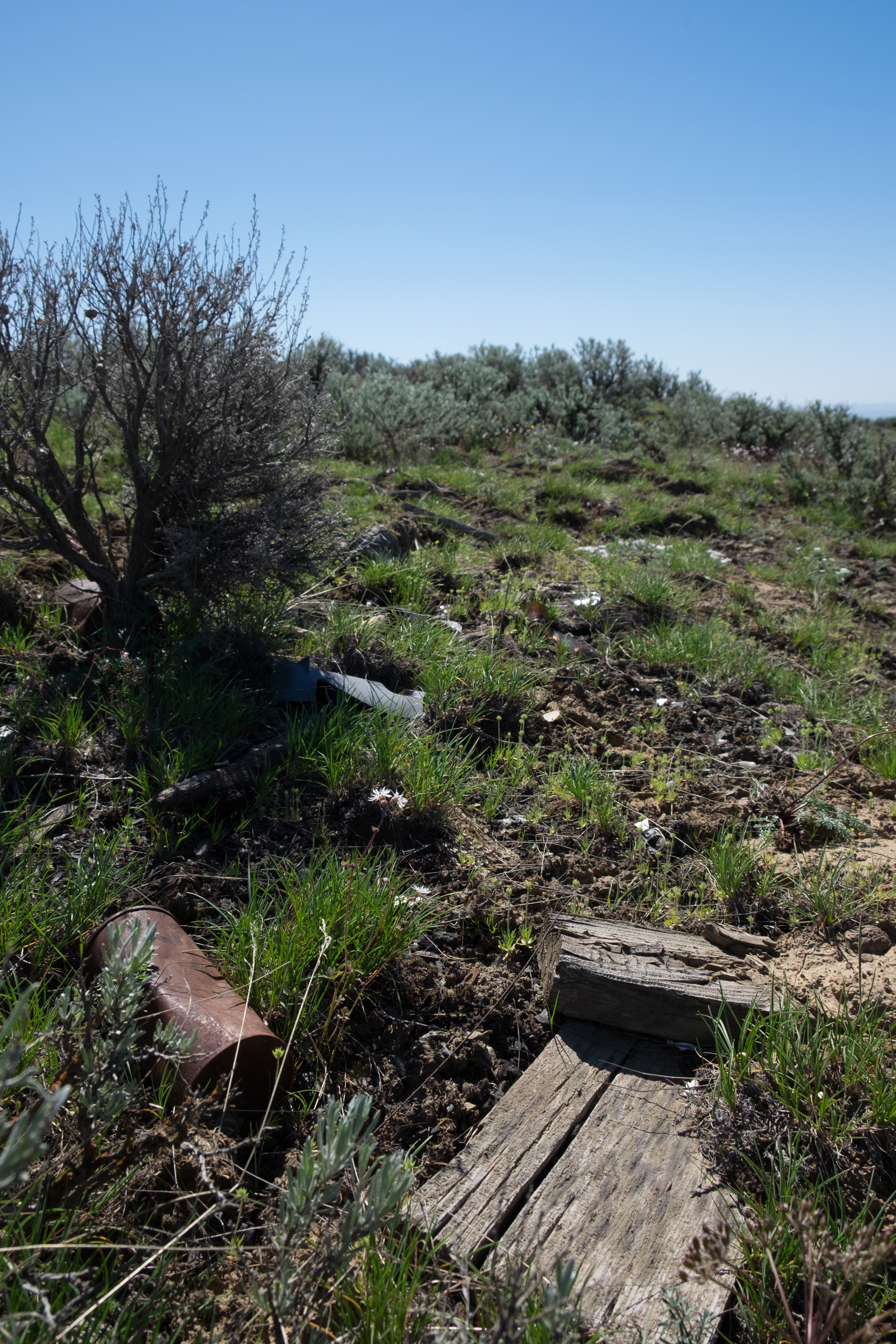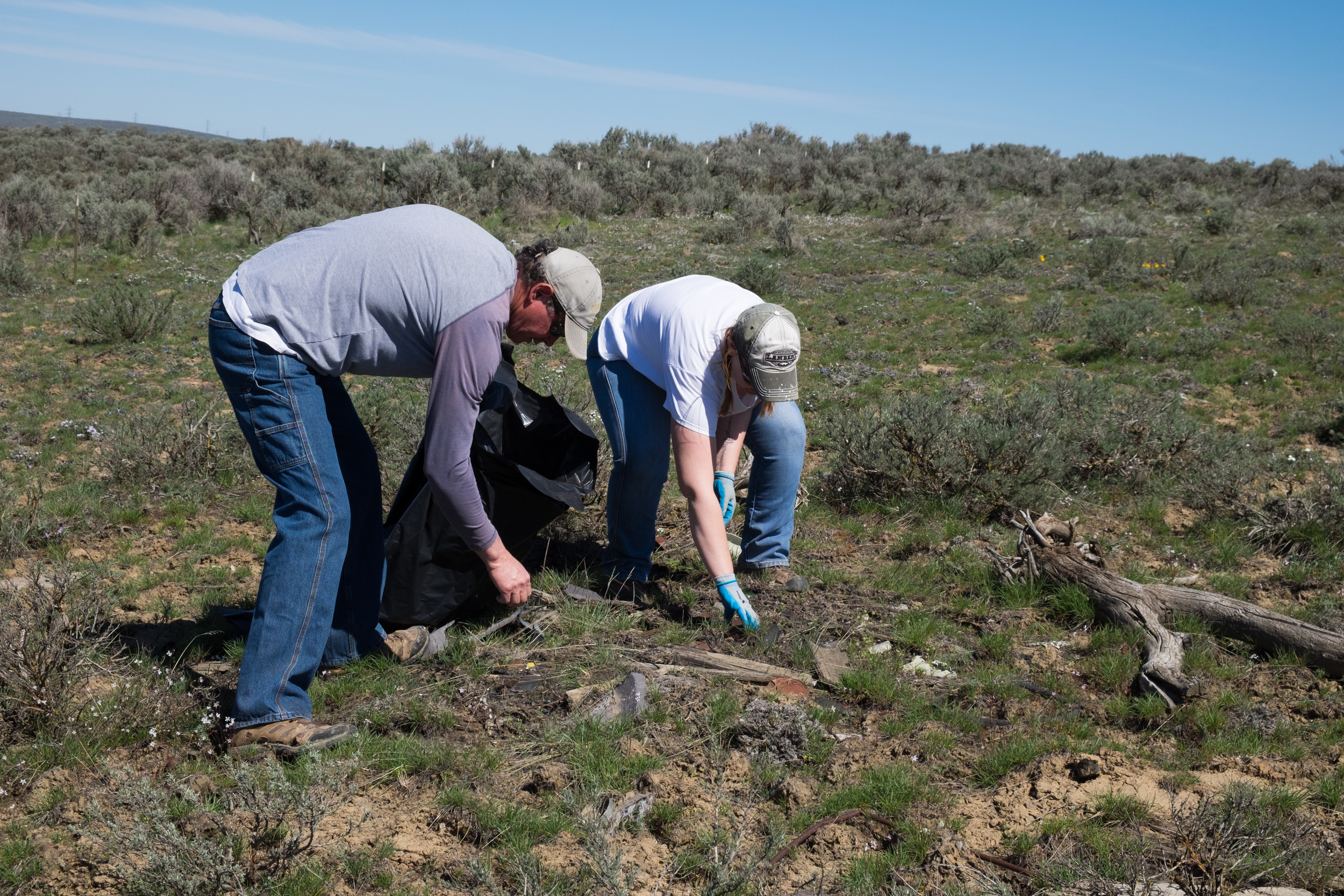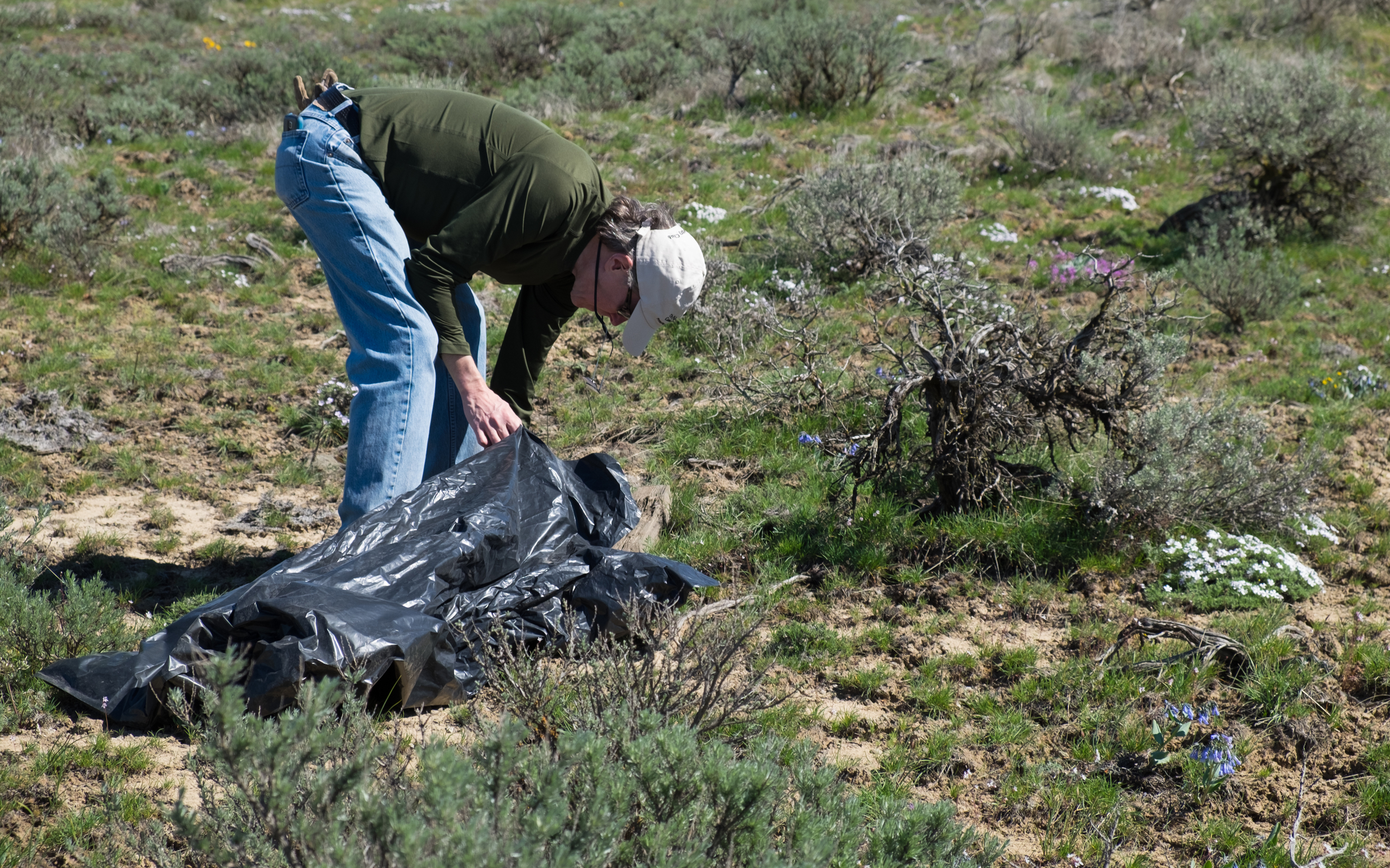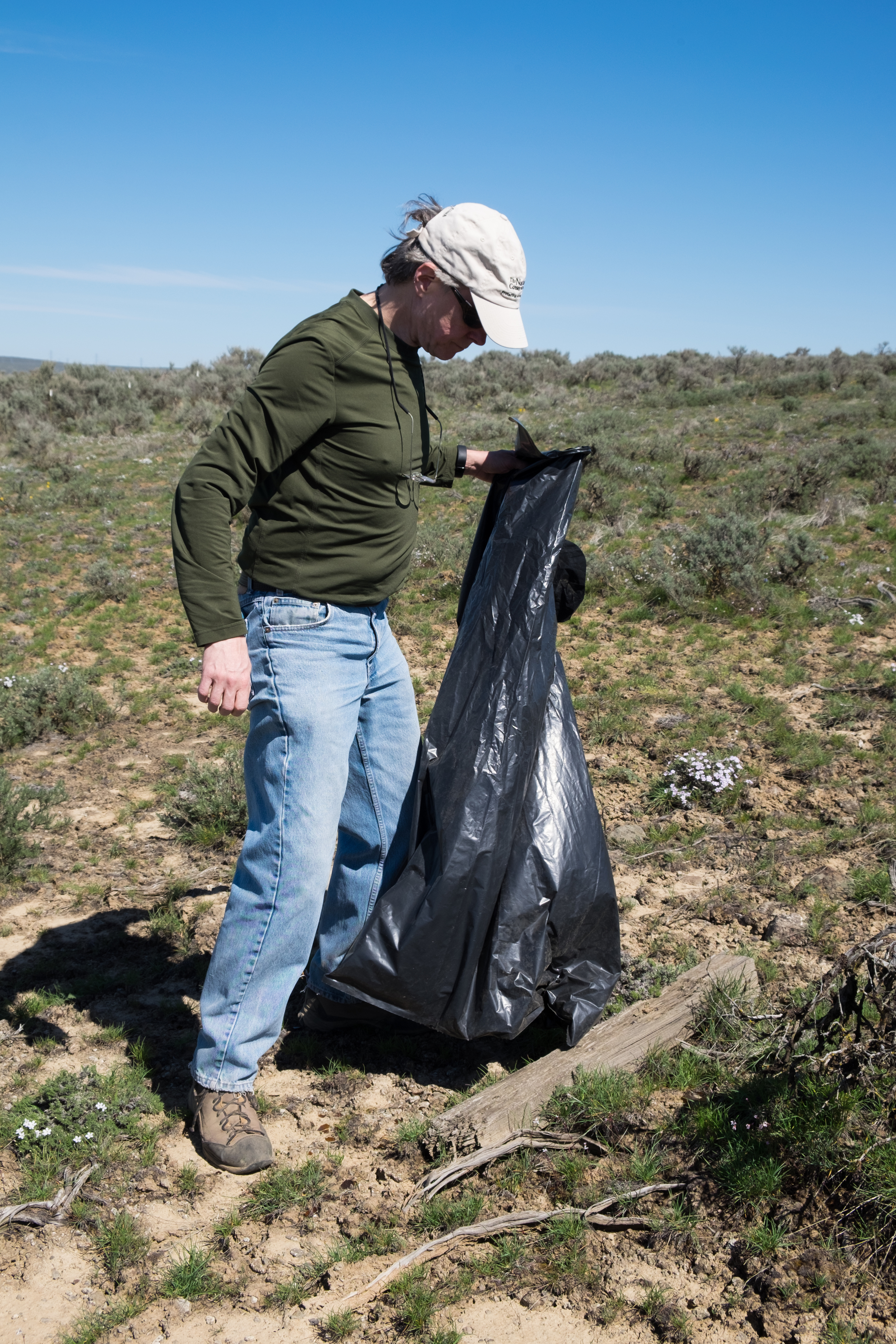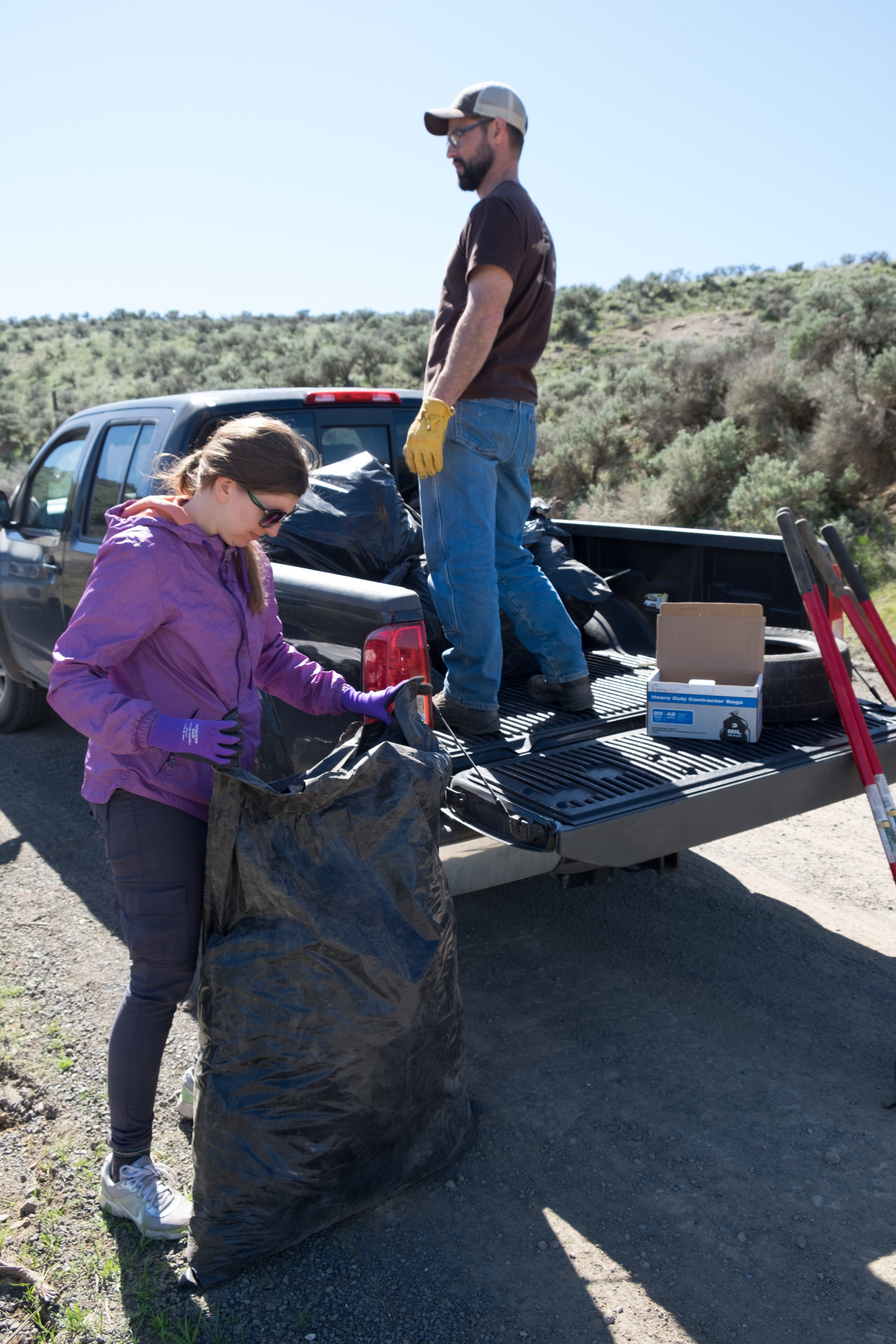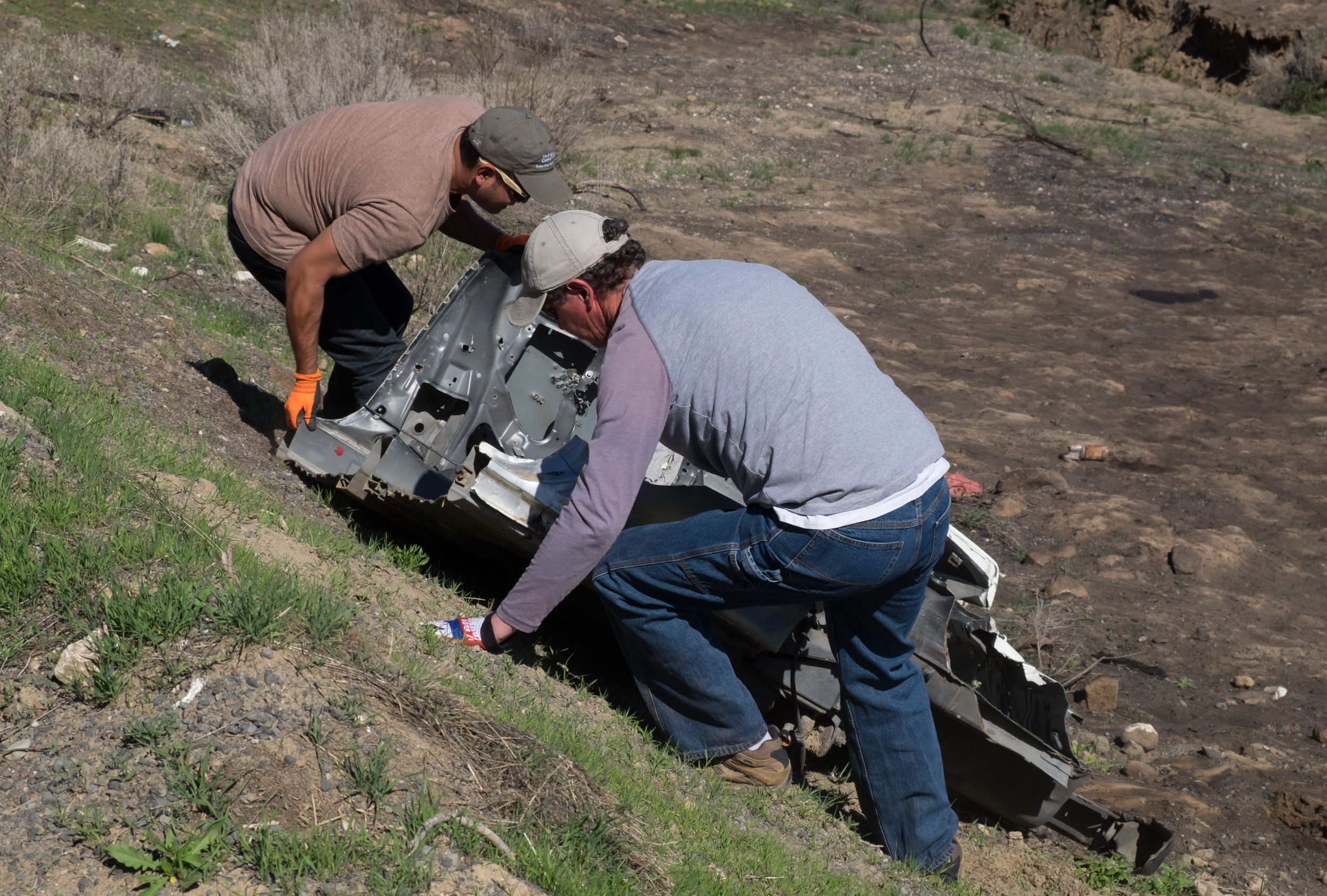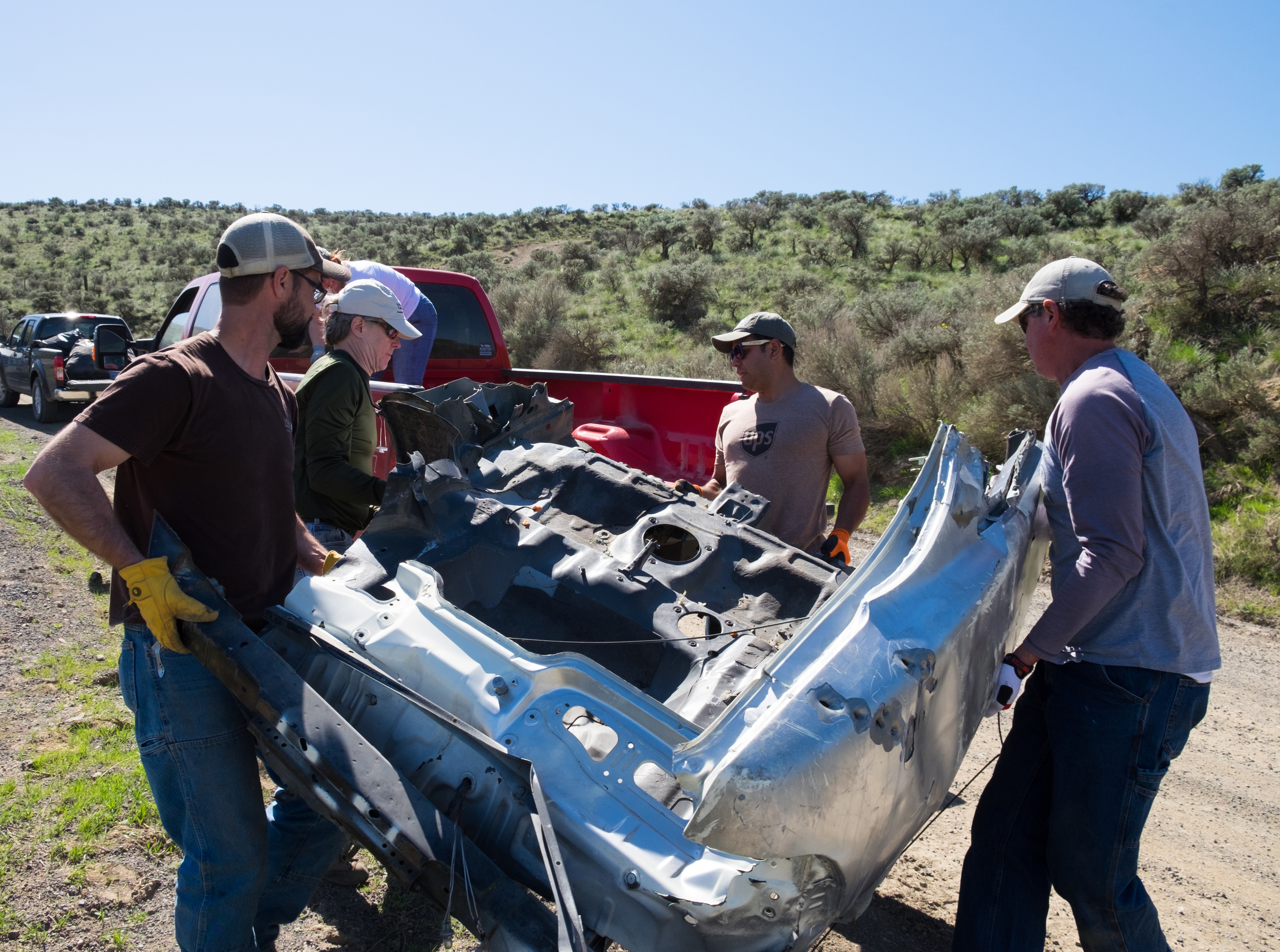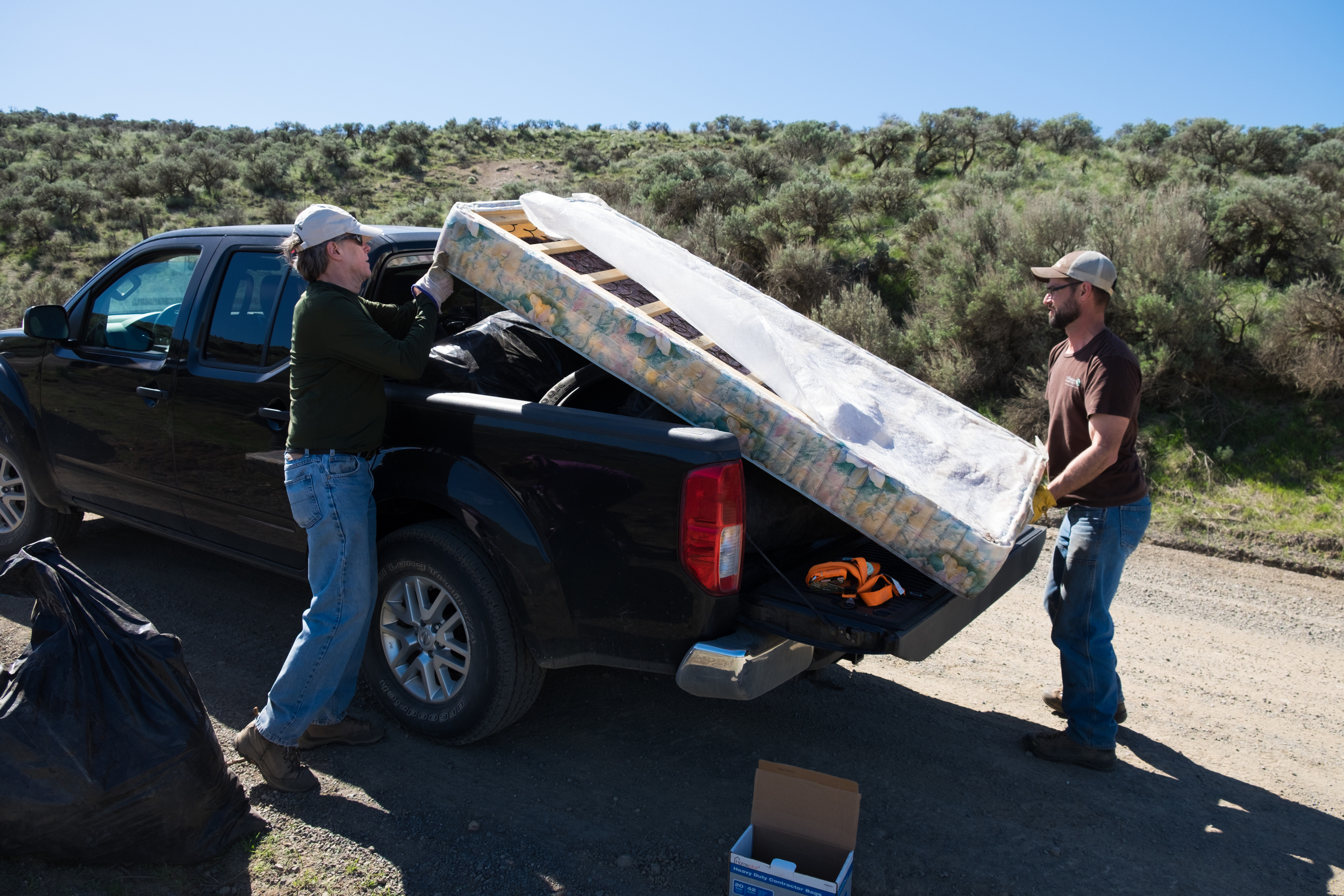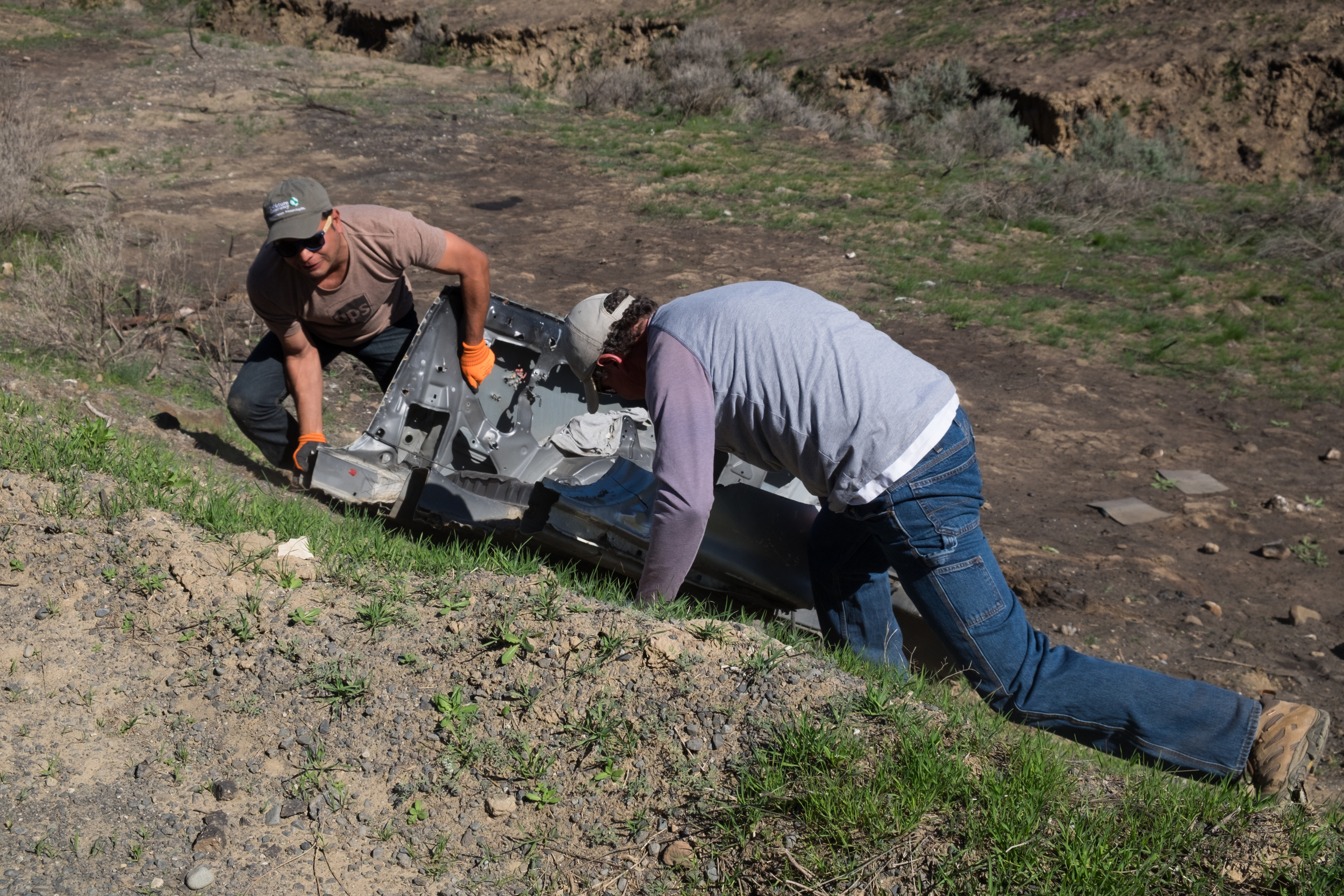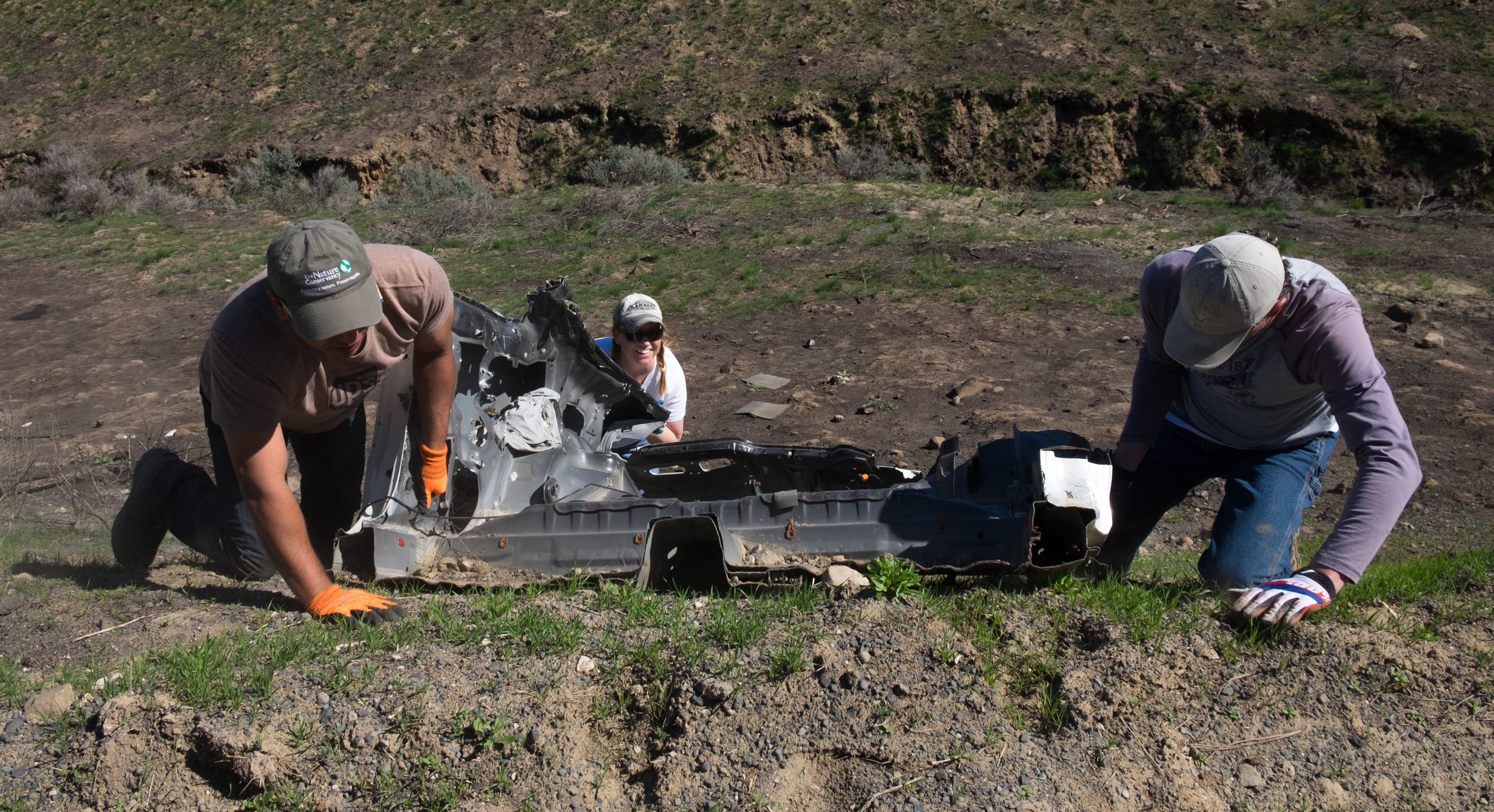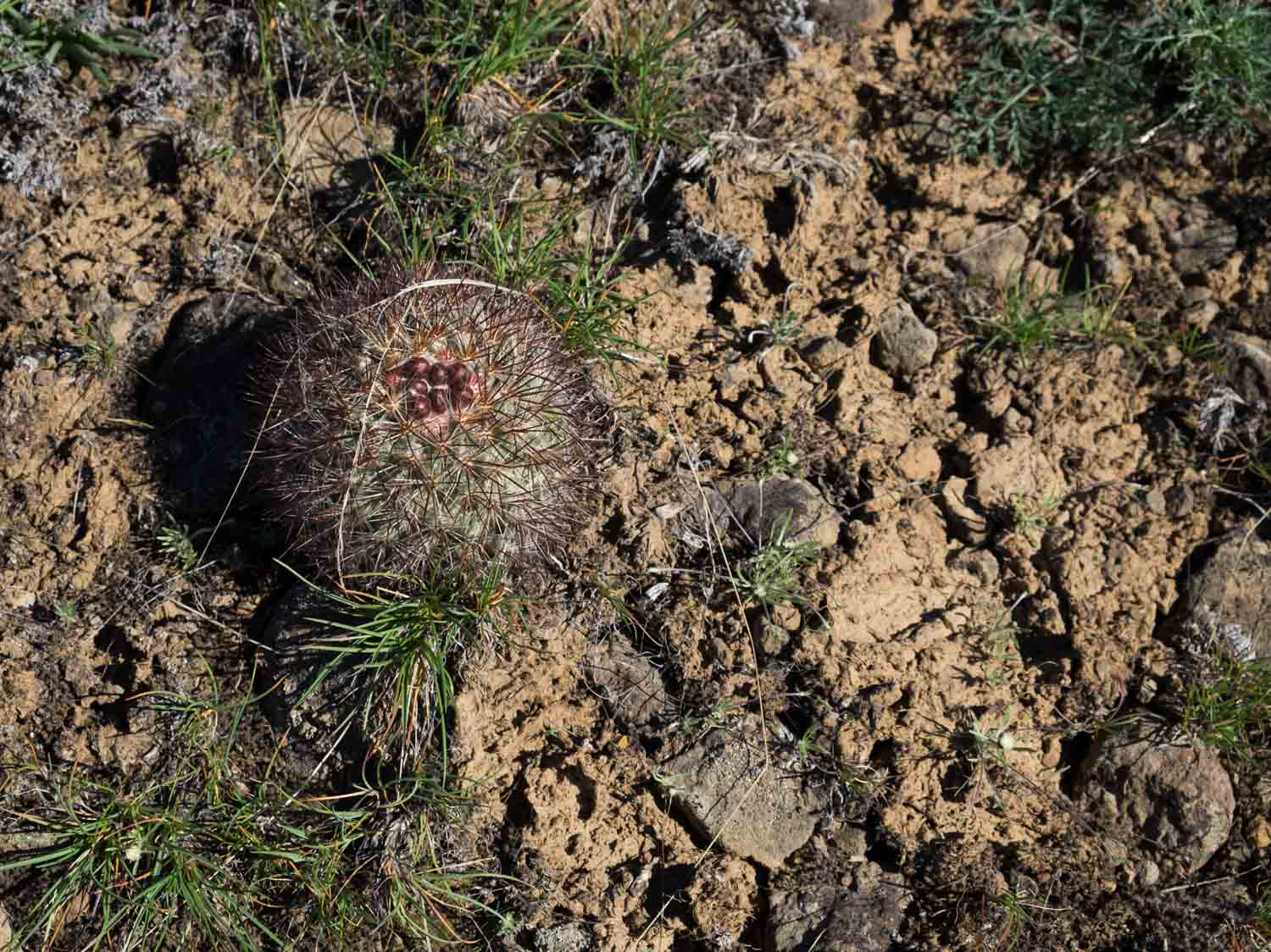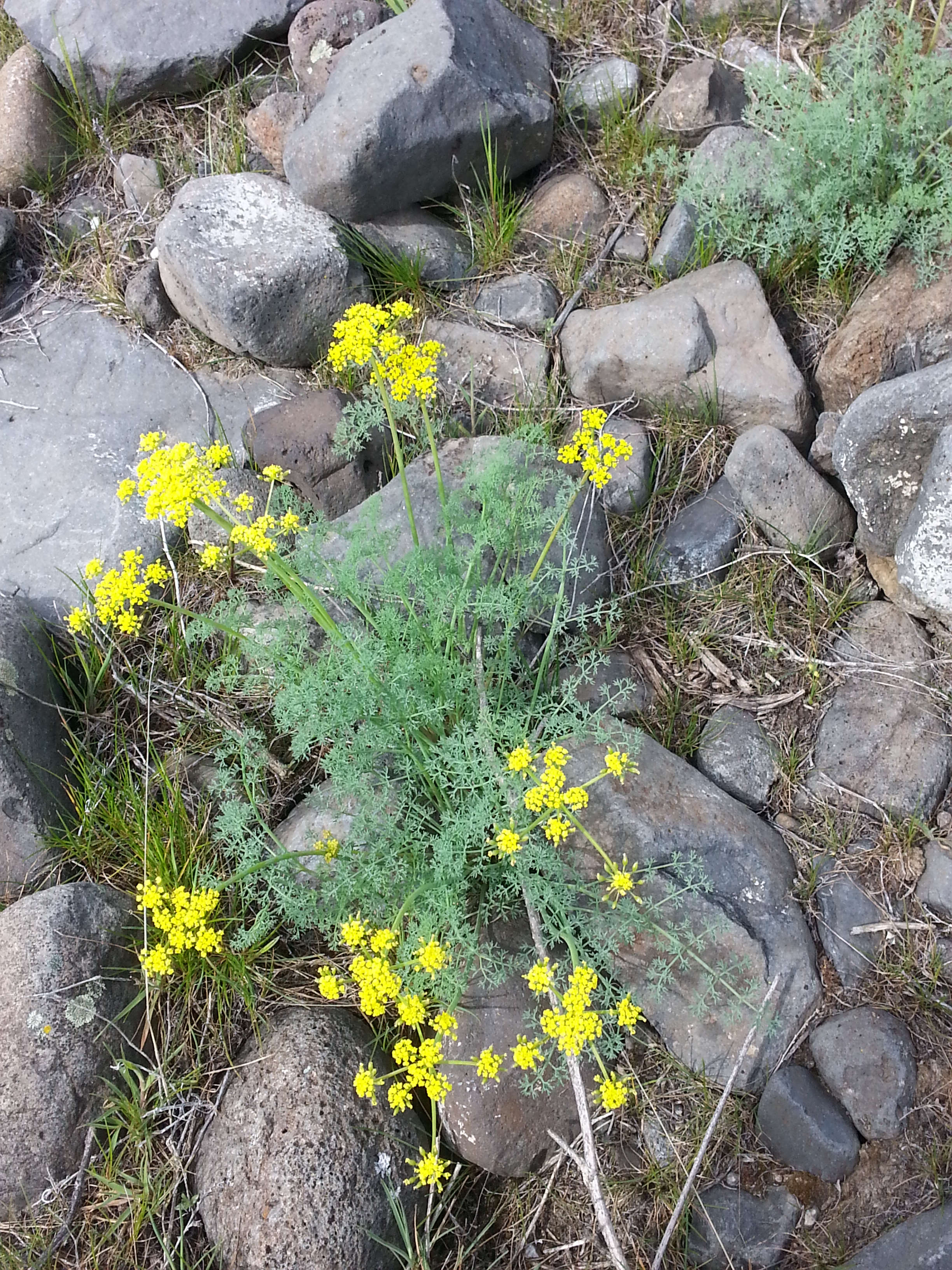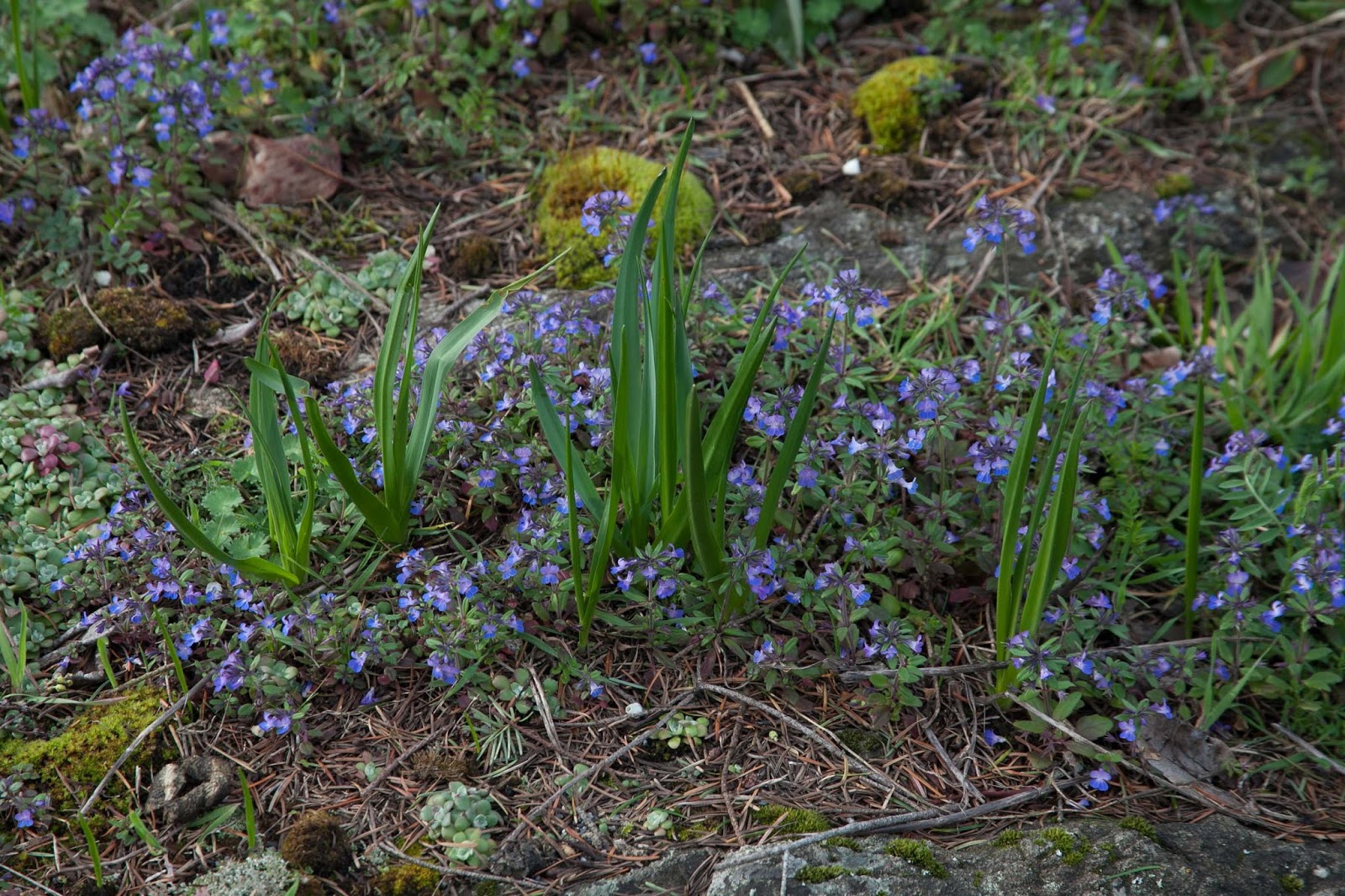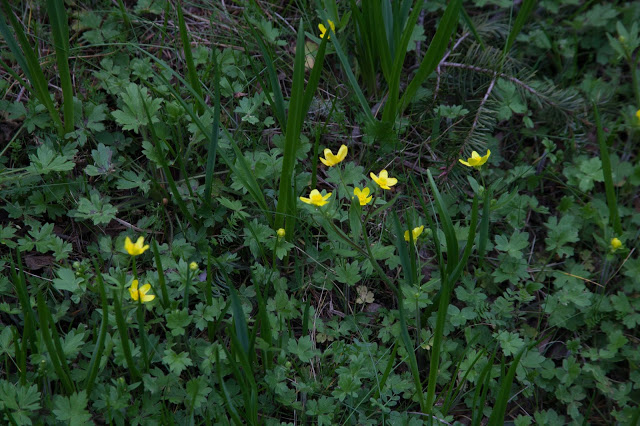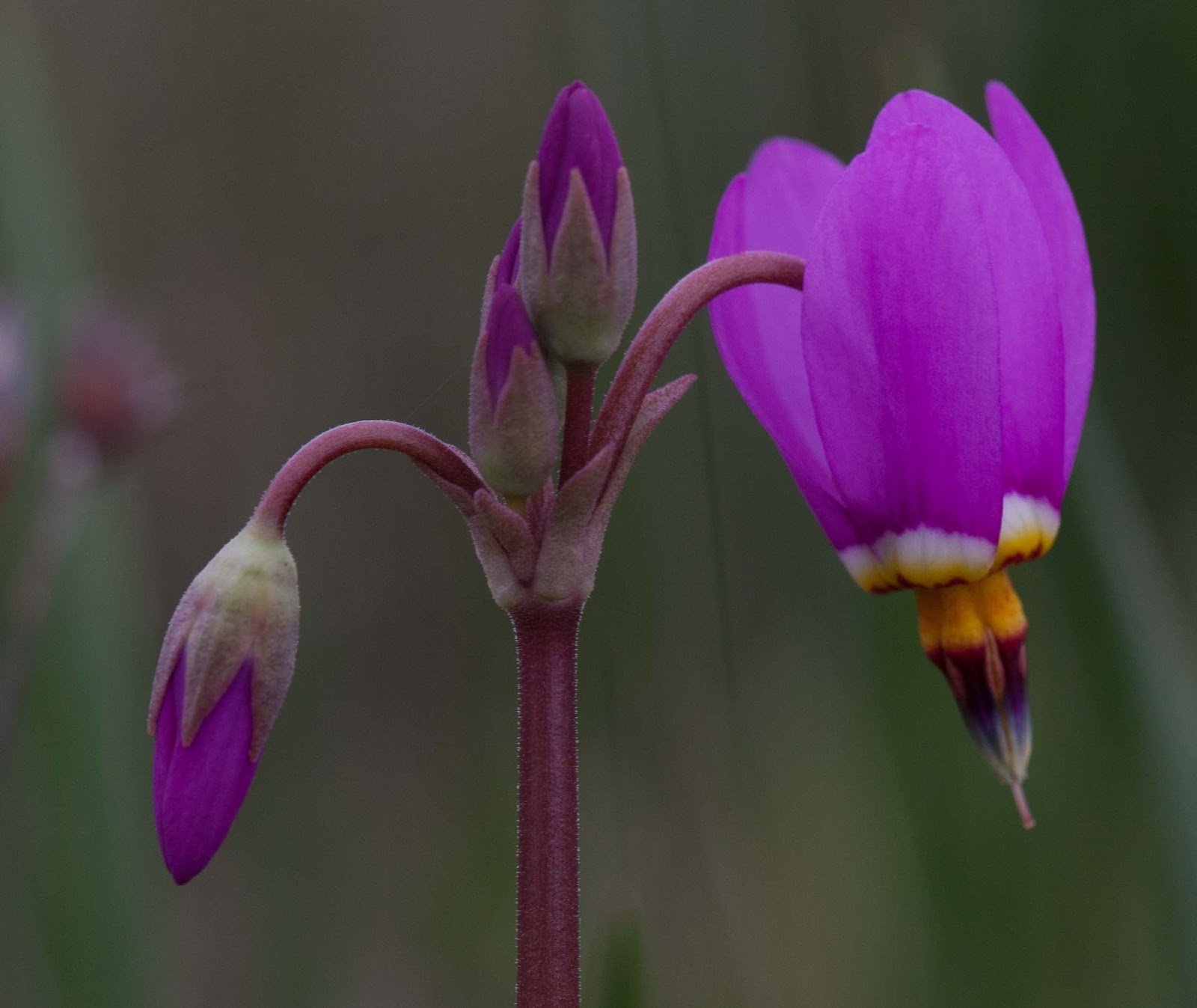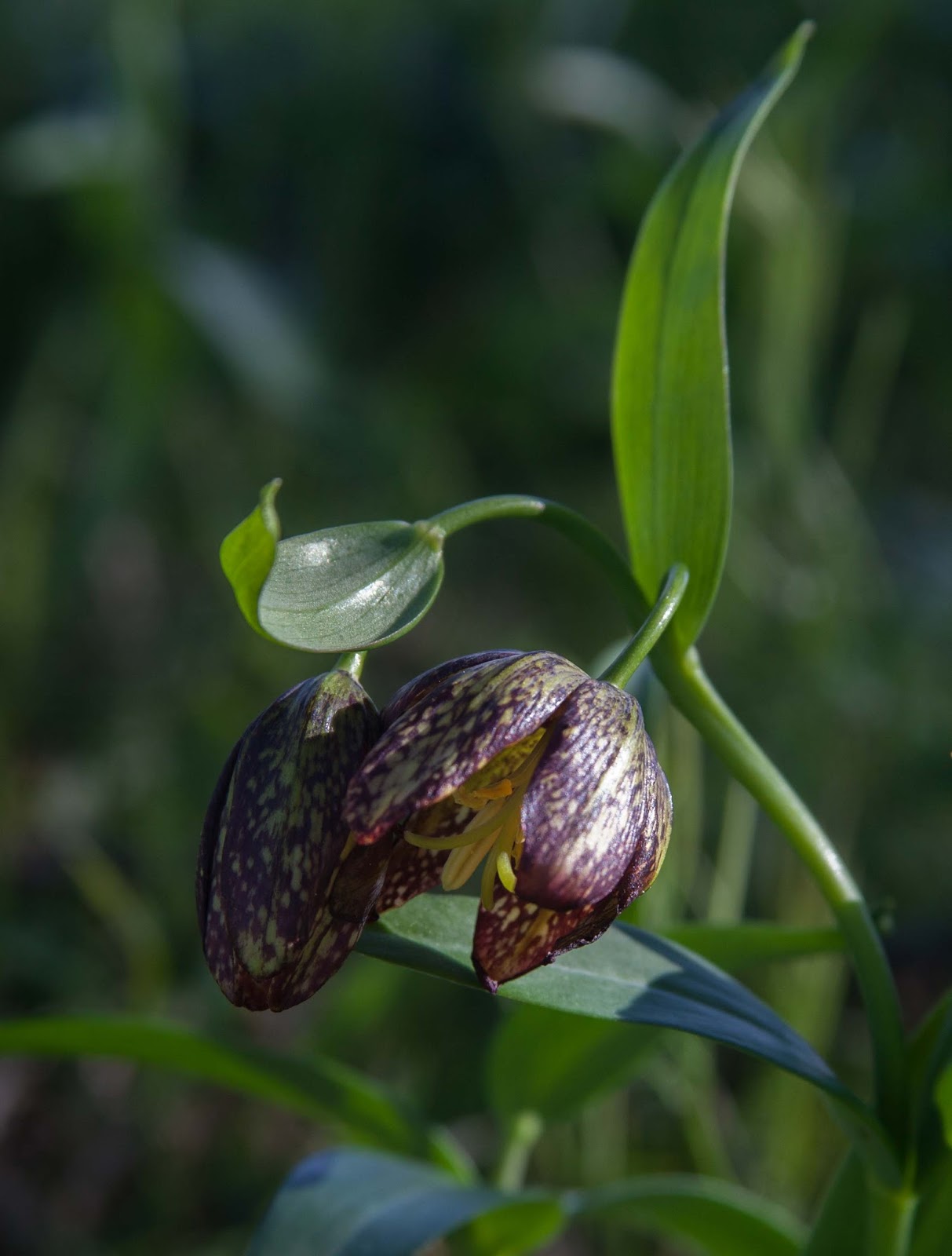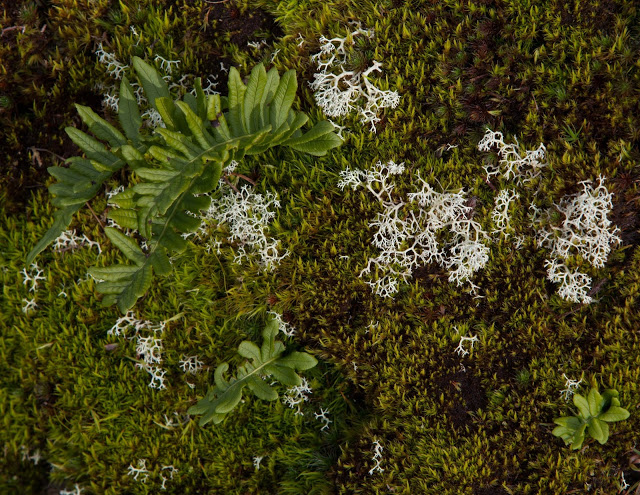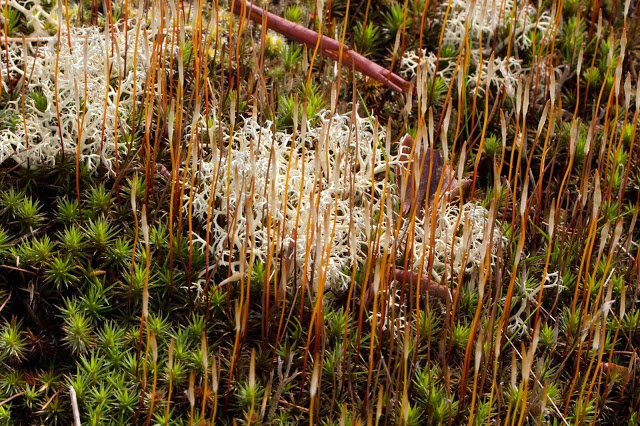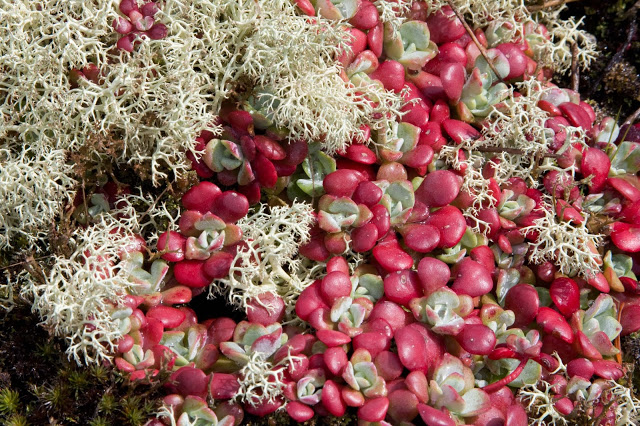Photo by Cameron Kersten
Conservation Flowers
Discover Washington's Shrublands
Shrub-steppe Brings Spring Surprises
Prairie Appreciation Day highlights an often-overlooked treasure
Take a Trip During Yellow Island's Wildflower Bloom
Yellow Island Time: Third ‘Peak Bloom’
Written and Photographed by Phil Green, Yellow Island Steward
Early May saw the rapid disappearance of camas across the island but even as the camas was fading new species were blooming across the meadows and rocky balds.
Oregon sunshine, aka wooly sunflower, (Eriophyllum lanatum) finally came into its own after a couple false starts in mid March and mid April. There are now large patches of what may be the brightest yellow flower Yellow Island has to offer.
Broadleaf stonecrop (Sedum spathulifolium) is about tied with the Eriophyllum for brightest yellow flower. My absolute favorite place on the island is the rocky area atop Hummingbird Hill that is covered with frilly reindeer lichen that forms a nice bed for the stonecrop. The combination of colors and textures cannot be beat.
A third bright yellow flower is Puget Sound gumweed. It appears across the meadows and rocky outcrops but is particularly thick on the south side of Hummingbird Hill.
Three non-yellow species that occur individually or in small groups are California broomrape (Orobanche californica), Hooker’s onion (Allium acuminatum) and harvest Brodiaea (Brodiaea coronaria). These cheery spots of color brighten an otherwise meadow that is rapidly turning to brown.
When all these species start fading, there are at least three species that have will bloom in June into July. Can you name them?
LEARN MORE & VISIT YELLOW ISLAND
ORIGINALLY PUBLISHED ON PHIL GREEN'S BLOG, READ MORE!
Beezley Hills Wildflower Day
Photographed by AJ Dent, Volunteer Photographer
It was a celebration of the magic of Eastern Washington at our Wildflower Day Celebration! Visitors explored the Beezley Hills preserve, then joined in the festivities with other Conservancy members and Legacy Club guests through guided walks and talks about nature.
Peter Lancaster began at the trailhead to talk about the Pygmy Rabbit recovery program happening in the area. Afterwards, Molly Boyter, Botanist for the Bureau of Land Management and Emily Orling, Botanist for Rebalance Consulting shared information about plants and flowers.
Become a member today
Yellow Island Time: Mid-April Flower Report
Written and Photographed by Phil Green, Yellow Island Steward
It's been over a month since the last post and a lot has changed. The early individual blooms of fawn lilies (Erythronum oregonum) exploded into large patches of stunning white flowers. This species peaked around April 1 and as of today there are just scattered blooms on the north side of the island. Shooting star, (Dodecatheon pulchellum), also peaked around April 1 and is now mostly going to seed. This is a normal bloom pattern for fawn lilies and shooting stars.
Harsh paintbrush (Castilleja hispida), western buttercup (Ranunculus occidentalis), and chocolate lilies (Fritillaria lanceolata) were also blooming a month ago. However, these species have persisted and now cover large areas of the island with their reds, yellows and shades of brown. Again, this is a normal pattern for these species which should persist into May.
One species that isn't showing a normal pattern is great camas (Camasia leichtlinii). Camas first bloomed March 24. The earliest bloom date over 30 years of record keeping was March 10, the latest April 20, with an average of April 4. March 24 is well within the normal range. However, instead of showing a normal bell shaped curve of a gradually increasing bloom, peaking in late April, within ten days camas covered the island. Already many are starting to go to seed. We have had a stretch of unseasonably warm weather so this may be why.
One other major surprise was the first bloom on Nootka rose (Rosa nutkana). The average for Nootka rose is May 10. The previous earliest date was April 26. This year it was a week earlier, April 19. It should also be noted that Nootka rose was one of the species fooled last fall. About a quarter of the roses bloomed in the fall of 2015 due to unseasonably warm weather.
People always ask, well, how does this compare to other years. All years are different but for me, this was/is another five star year. Spectacular! Here's a sampling from the past week. Enjoy!
LEARN MORE & VISIT YELLOW ISLAND
ORIGINALLY PUBLISHED ON PHIL GREEN'S BLOG, READ MORE!
Hunters Become Stewards at Beezley Hills
Written & Photographed by Anna Snook, Northwest Photographer
Everyone who loves the outdoors interacts with it in different ways. Some of us go out to shoot with cameras; some of us, to shoot with rifles. Some shoot wildflowers and landscapes, some shoot animals, and some shoot glass bottles. All these activities intersect on the Beezley Hills preserve in Eastern Washington. By day, Beezley Hills is an expansive steppe; the sprawling sagebrush reaching to the sky in all directions, dry ground under foot. In the spring, it’s home to dozens of wildflower species – balsamroots bowing their golden heads in the breeze, sprinkled with the purple of phlox and shooting star, followed by lupine and camas. In the fall, home to a hunting tradition that precedes the preserve’s TNC days.
Several times a year, local hunters are provided the opportunity to learn more about the preserve, and the chance to take care of it – in exchange, they get hunting rights on the land. When we’ve seen what kind of conflict can arise from “othering” in states like Washington, Oregon, and Idaho, a project like The Nature Conservancy’s Hunter Steward program is heartening. It shows us that there are environmentalists, and there are hunters, and there are both. Conservation is as simple as that: people who love the land take care of it, no matter how they use it.
So, on a warm sunny Saturday in April, you might find a few of these dedicated stewards, bags in hand, picking up everything from broken glass bottles and beer cans, to burn piles and even car frames. Hopping out of their pickup in between clean-up sites every time they see a bit of roadside litter. Finding hidden treasures among the trash – a marble, a usable car part, a coin. Every once in a while, standing up to take in the never-ending sky, or the mountains, or the perfume of sagebrush. It’s all in a day’s work on the Beezley Hills preserve.
Anna Snook is a Northwest photographer, see more of her work!
Learn more about our work at Moses Coulee and Beezley Hills
Learn how you can volunteer too!
The Bloom in Washington
Written and Photographed by Linda Urbaniak
Wildflowers abound in Washington State. They start blooming early in the spring and continue late into the fall with the greatest blooms in April and May. Very few have blossoms in the winter. Their bloom time depends on elevation, amount of sun and temperature so with a warm spring everything will bloom earlier, with a late, cool spring everything will bloom later. They may bloom regularly in an area for years and mysteriously disappear when sought the following year. Part of the fun in discovering our wildflowers is the search for them.
Although there are areas where many wildflowers bloom at the same time, they usually are more sparsely situated. It isn't at all unusual to find just a few flowers in an area. On the other hand, where they bloom in profusion the sight can take your breath away.
One of the earliest is the lovely Grass Widow, Olsynium (once called Sisyrinchium) douglasii, which starts blooming in wet, sunny meadows just after the snow melts. This small bulb has shiny purple/red flowers and soon disappears as the land dries. It can be found north of the Olympic Mountains or east of the Cascades at mid elevations (about 1800-4800 feet above sea level).
Another early bloomer is Spring Gold (Lomatium utriculatum). This is one of the many desert parsleys found primarily east of the Cascades in the same vernal meadows as the Grass Widow as well as in drier slopes, meadows and rocky places. Starting to bloom very early, sometimes even in the late winter, this golden flower will continue to bloom until summer. The ferny leaves resemble fine leafed parsley and are topped with several heads of tiny bright yellow flowers. It can easily be confused with 5 or 6 other Lomatium that are similar and bloom somewhat later.
One early spring flower that almost everyone can recognize is the Skunk Cabbage. Growing primarily on the wet sideand on the eastern slope of the Cascade mountains from sea level to mid elevations, Lysichiton americanus can be found in bogs and wet places in sun or part sun locations it is easily recognized by its bright yellow bract surrounding the spike of small yellow-green flowers.
Our wildflowers are everywhere once you start looking, but few are easily found until you get out and walk through our forests, meadows and dry-lands. Few are exceptionally showy and some are so small you really have to bend down to see their delicate beauty. The Nature Conservancy has preserved areas that will thrill you with the discovery of their blooms, so head for the outdoors to discover the beauty Washington has waiting for you.
BECOME A MEMBER OF THE NATURE CONSERVANCY TODAY
Mid March Yellow Island Flower Report
Written and Photographed by Phil Green, Yellow Island Steward
It’s been several weeks since the last update so what has changed? While the red flowering currant and blue-eyed Mary may be at their peak now, several other species are just beginning. The first rufous hummingbird found the flowering currant on March 11.
The next species to flower was buttercup, Ranunculus occidentalis. It bloomed on February 14. While this is early for buttercup, the earliest first bloom date in over thirty years of recording was January 16 in 2009. However, that was a lone plant and the next individual to flower that year was two months later in mid March. This points out one of the problems of looking at first bloom dates. Do they indicate the start of the species blooming that year or are they reporting an anomaly? The latest first bloom date for buttercup is April 3, 1990.
February 21 had two species show their first flowers of the year: harsh paintbrush (Castilleja hispida) and desert parsley (Lomatium nudicale). This is the earliest recorded date for both species. For paintbrush, it was six days earlier than last year February 27, 2015 that was the previous earliest bloom date. For the desert parsley, this was off the charts early. The previous earliest date was March 22, 2015, 31 days later! And this wasn’t just one plant. Three individual plants in the same general area all bloomed with in a day or two of each other.
Pacific sanicle (Sanicula crassicalis) bloomed two days later on February 23. This was also a week ahead of the previous earliest first bloom, March 3, 2015. Similar to the desert parsley and paintbrush, the previous record was in 2015. The latest first bloom for sanicle was April 14, 2000.
It’s a leap year and two species celebrated by blooming on February 29: fawn lily (Erythronium oregonum) and prairie saxifrage (Saxifraga integrifolia). The earliest and latest bloom dates for fawn lilies is February 14, 2015 and March 25, 1985. For the saxifrage the corresponding dates are February 27, 2010 and April 15, 1982.
As of this writing, only two other native species have bloomed: chocolate lily (Fritillaria lanceolata) on March 7 and shooting star (Dodecatheon pulchellum) on March 11. Earliest and latest for these two species are: Chocolate lily March 5, 1992 and April 10, 2008 and shooting star February 28, 2010 and April 3, 2009. For the shooting star it is interesting the extremes occurred in back to back years. Also for those two species I’ve only found two plants of each in bloom so far.
While there are several hundred fawn lilies and several dozen paintbrush and buttercups, the island is far from colorful. The flowering currant and blue-eyed Mary still provide the majority of the color with fawn lily a distant third. But how patriotic: red currants, white fawn lilies and blue-eyed Marys.
(Unlike the last post, all photos are from 2016.)
LEARN MORE & VISIT YELLOW ISLAND
ORIGINALLY PUBLISHED ON PHIL GREEN'S BLOG, READ MORE!
Early Blooms on Yellow Island
Written and Photographed by Phil Green, Yellow Island Steward
Early February and what’s happening on Yellow? Are the flowers getting ready to bloom? Amazingly we have a couple species that have been blooming since last November. The strange fall weather that closely mimics spring weather definitely fooled two very different species.
Red flowering currant (Ribes sanguineum) was found in bloom in mid November. Because I don’t look for first bloom dates in November, the exact date is a mystery. Ribes is a shrub so it is easy to follow individual plants. Those that flowered in in November, perhaps 10% of those on the island, have lost their flowers now. But of those that didn’t bloom in 2015, the first bloom I noted this year was January 30. And here we are on February 13 with most of the individual plants showing some flowers. I always think of the rufous hummingbirds arriving to take advantage of the early currant blooms. However, this year the blooms are too early and the hummer taking advantage is an Anna’s hummingbird that over wintered on Yellow. (That is another first for Yellow Island.)
Within a month or so the lilies that have already broken ground will start to bloom, tourists will start arriving, and the flowering season will begin exploding in earnest for another year.












